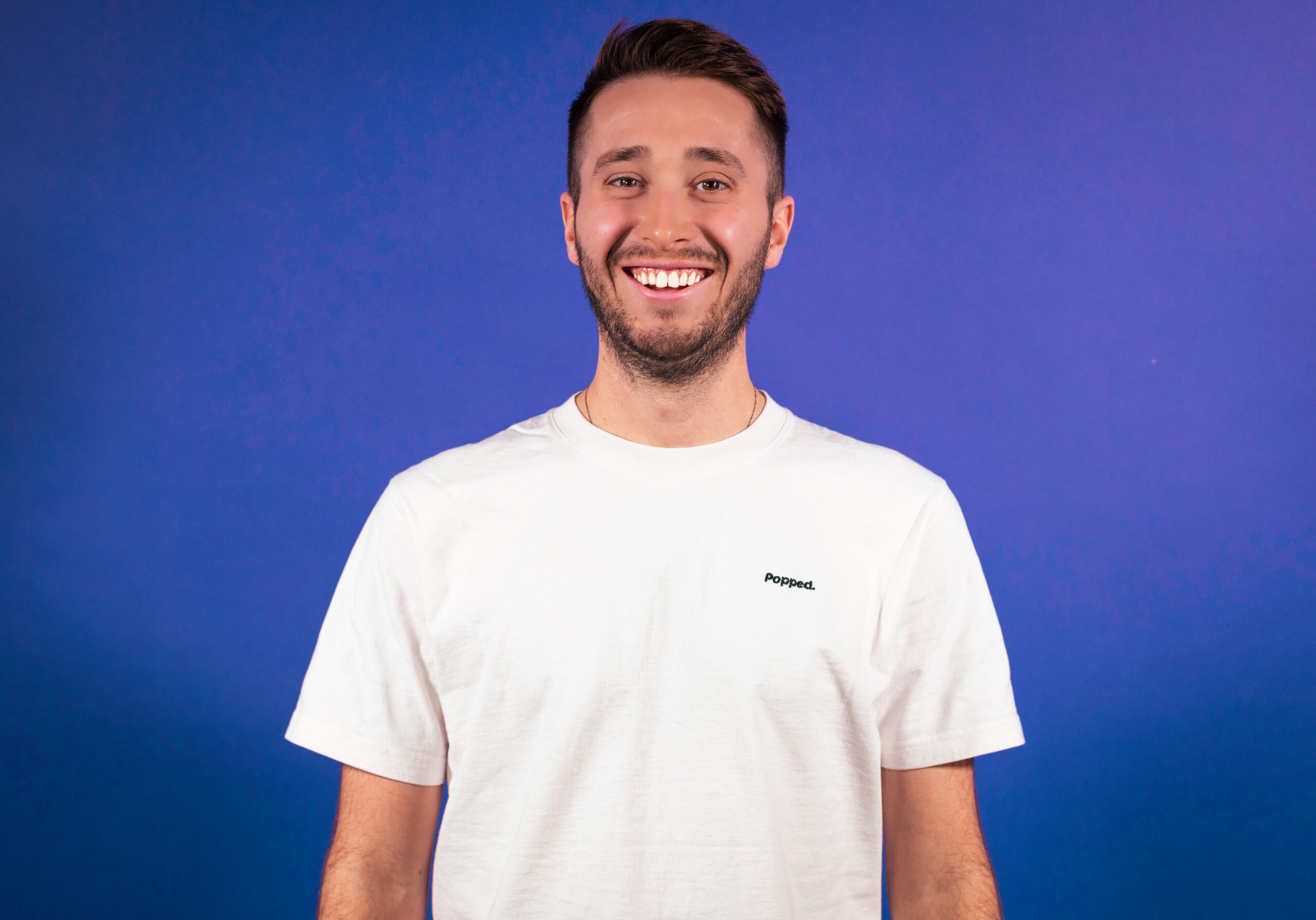It’s easy to dismiss modern-day Paris-Roubaix tech as stale, with aero tech now as dominant as in other races. But scratch beneath the surface and there’s more than enough to satiate the appetite of any tech-hungry bike nerd.
This year saw common tyre width increase ever more, 1x drivetrains gain further prominence and teams dabble with gravel tech. Time-proven Roubaix-specific hacks and unusual component swaps were also still commonplace.
Here are the best tech highlights from the 2024 edition of Paris-Roubaix, across both the men's and women's races.
Big tyres dominate
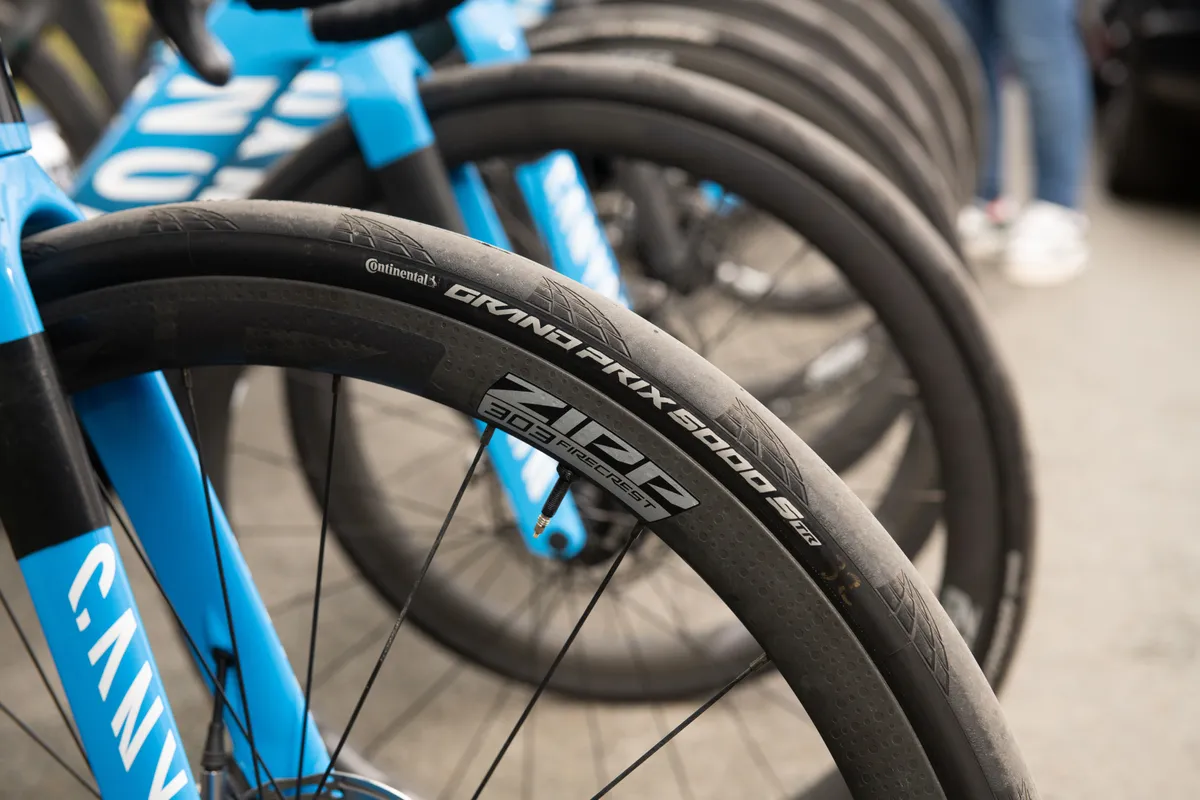
32mm road bike tyres look to be the new defacto standard for Paris-Roubaix.
Movistar Team, Groupama-FDJ, UAE Team Emirates and Ineos Grenadiers were all on 32mm wide Continental GP5000 S TR tyres.
Pushing further, some riders, such as Bahrain-Merida’s Fred Wright, used a 34mm wide GP5000 AS TR.
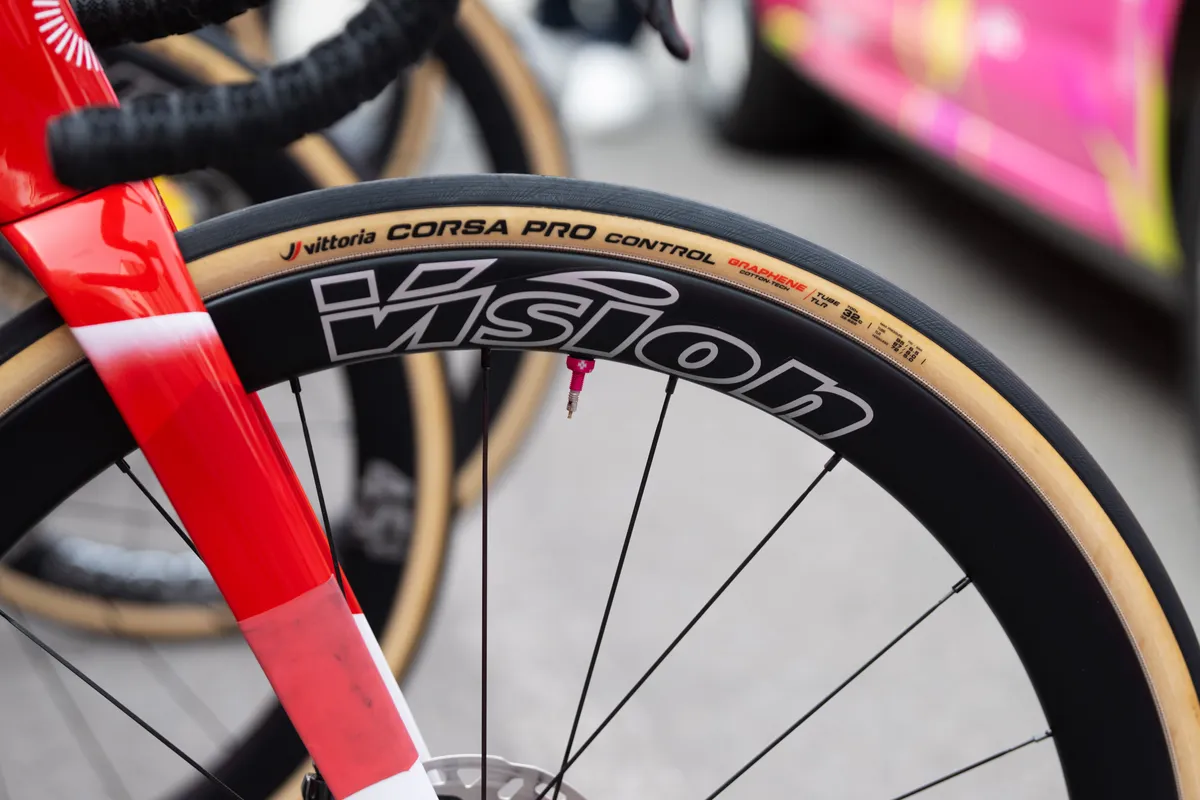
Alpecin-Deceuninck, Team DSM-Firmenich PostNL, EF Education-EasyPost, Arkea-B&B Hotels and Team Visma | Lease a Bike were on Vittoria’s Corsa Pro tyres. A smattering of riders opted for the slightly grippier Control version, presumably to help them deal with wet sections of cobbles.
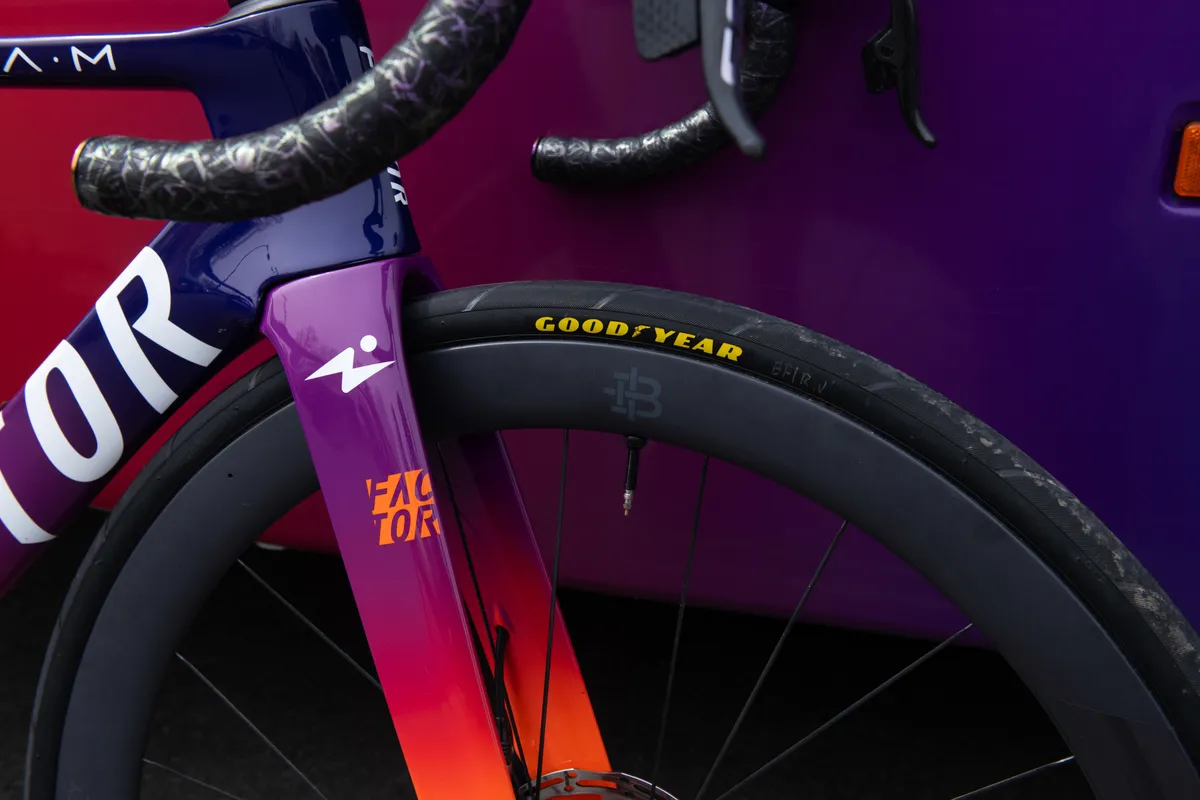
Schwalbe was represented by Canyon//SRAM Racing, with riders generally opting for its 34mm Pro One road tyres (more on that later).
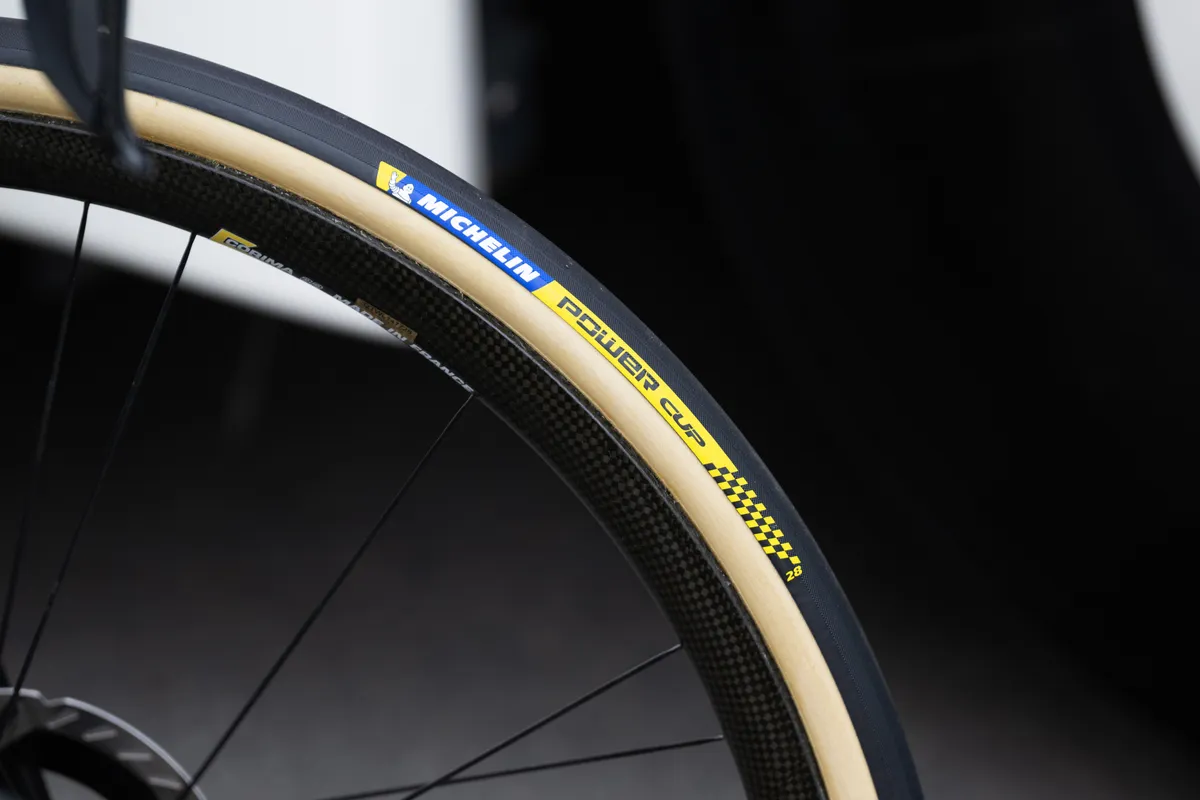
As expected, most teams ran tubeless – as far as we could see, Michelin was the only brand providing tubular tyres, in this case to Team Cofidis.
Tyre pressure still matters
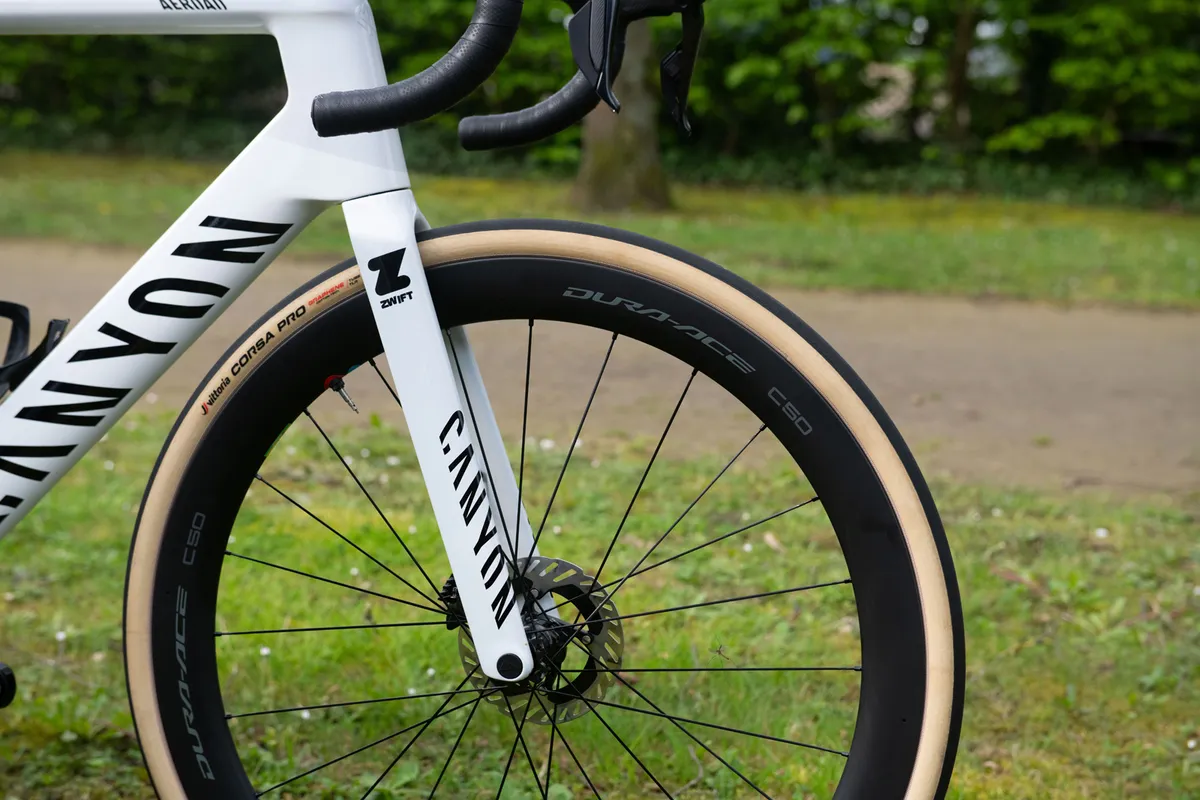
Tyre tech may have changed over time but one thing has always remained true – Paris-Roubaix is a race won or lost on tyre pressure.
Riders must balance comfort and control over the cobbles with grip and speed on paved sections.
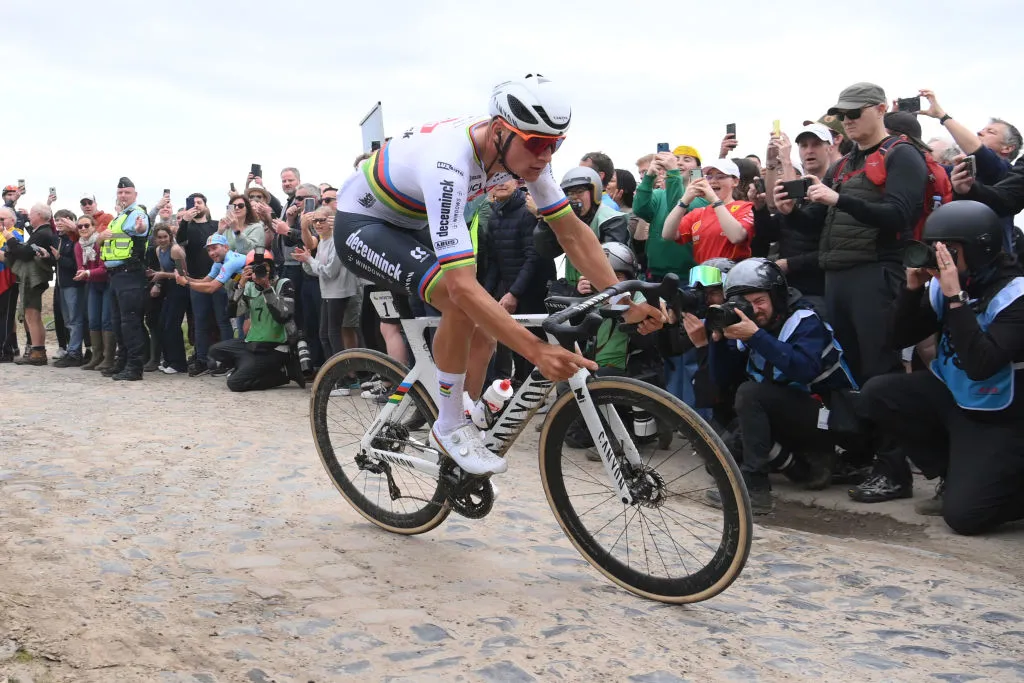
Tyre pressure is typically a closely-guarded secret, but footage from the start of the race showed men’s winner Mathieu van der Poel using 3.46BAR (52psi) in his 32mm Vittoria Corsa Pro tubeless tyres.
For a rider weighing 75 kilos, that is seriously low for road riding.
Despite this, for two years straight, Van der Poel has come through the puncture fest that is Roubaix with zero flats (and won while he was at it), so he’s doing something right.
An incident-free hookless takeover

Despite safety concerns, plenty of teams lined up on hookless rims.
At last year’s race, we saw several dismounted tubeless tyres – though this was from a mix of hooked and hookless rims.
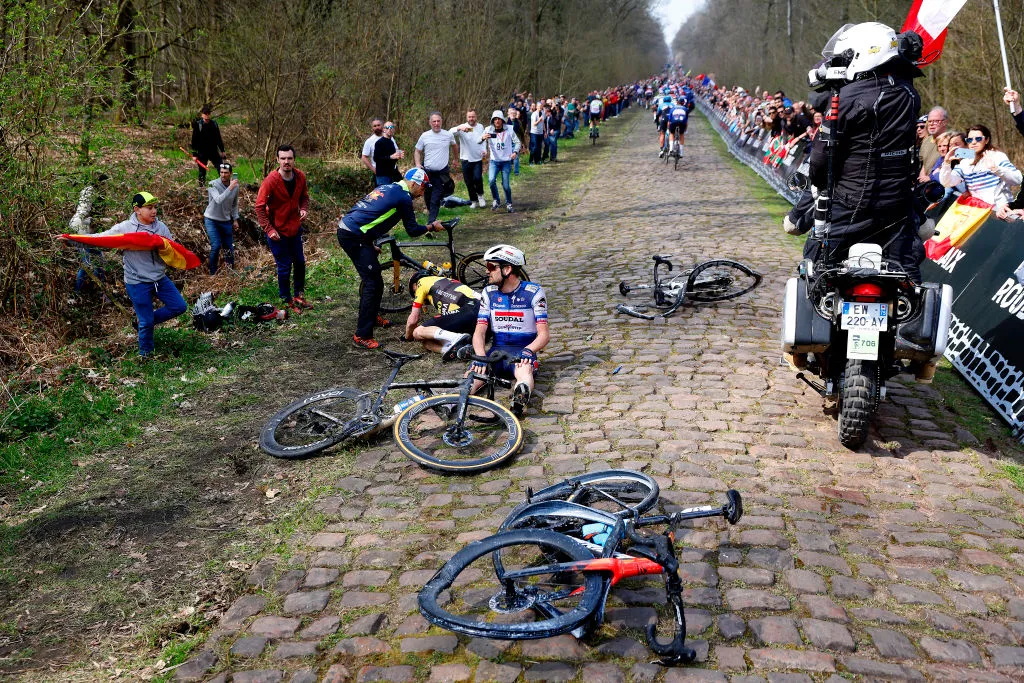
Several of these dismounted tyres were spotted in the aftermath of crashes, but it remains unclear whether or not they were the cause.
Though the incident has since been attributed to an impact with an unidentified object, more recently, Thomas De Gent’s crash at the UAE Tour led the UCI to launch an investigation into hookless road tubeless rims “in the interest of rider safety.”
Luckily for everyone, as far as we know, no crashes could be attributed to tubeless failures.
Massive chainrings
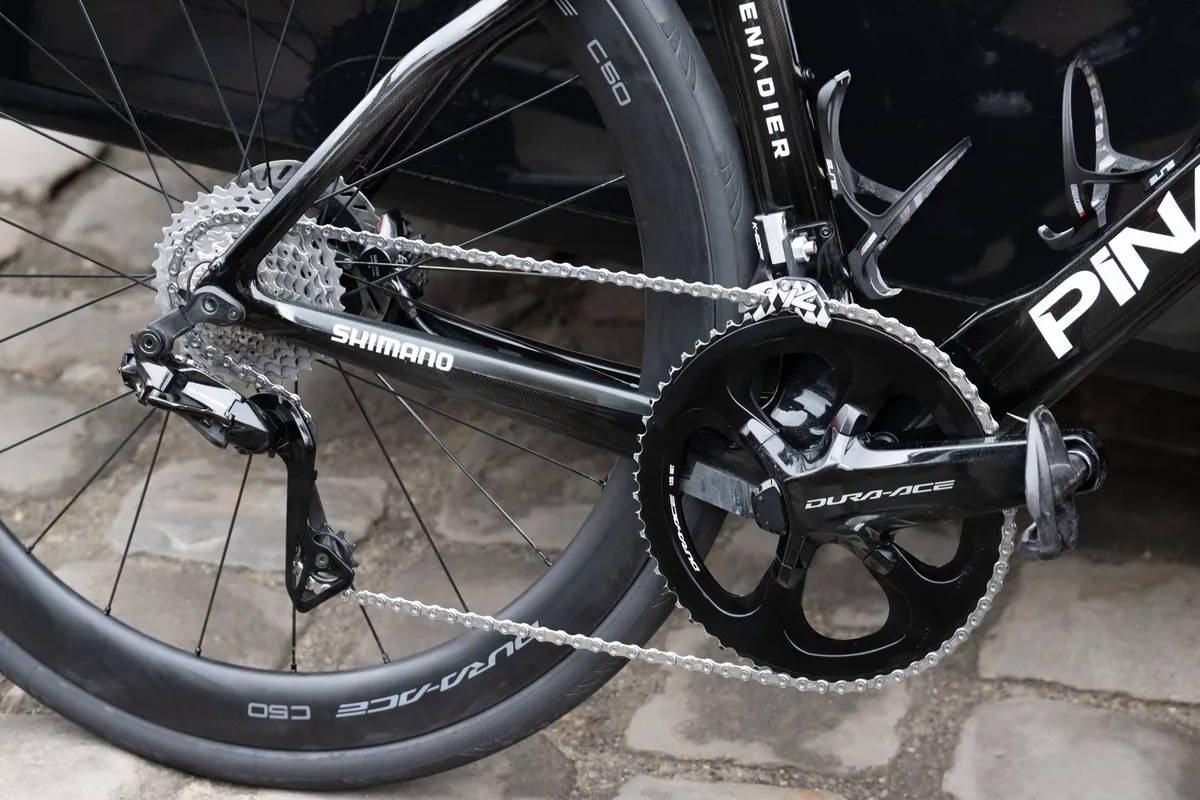
Ben Turner of Ineos Grandiers ran a 60-tooth chainring fitted, while his teammate Josh Tarling rocked up to the startline with a 62-tooth whopper.
Both young Brits paired their knee-crunching chainrings with an 11-34T cassette.
Theirs weren’t the only dinner plates in the race.
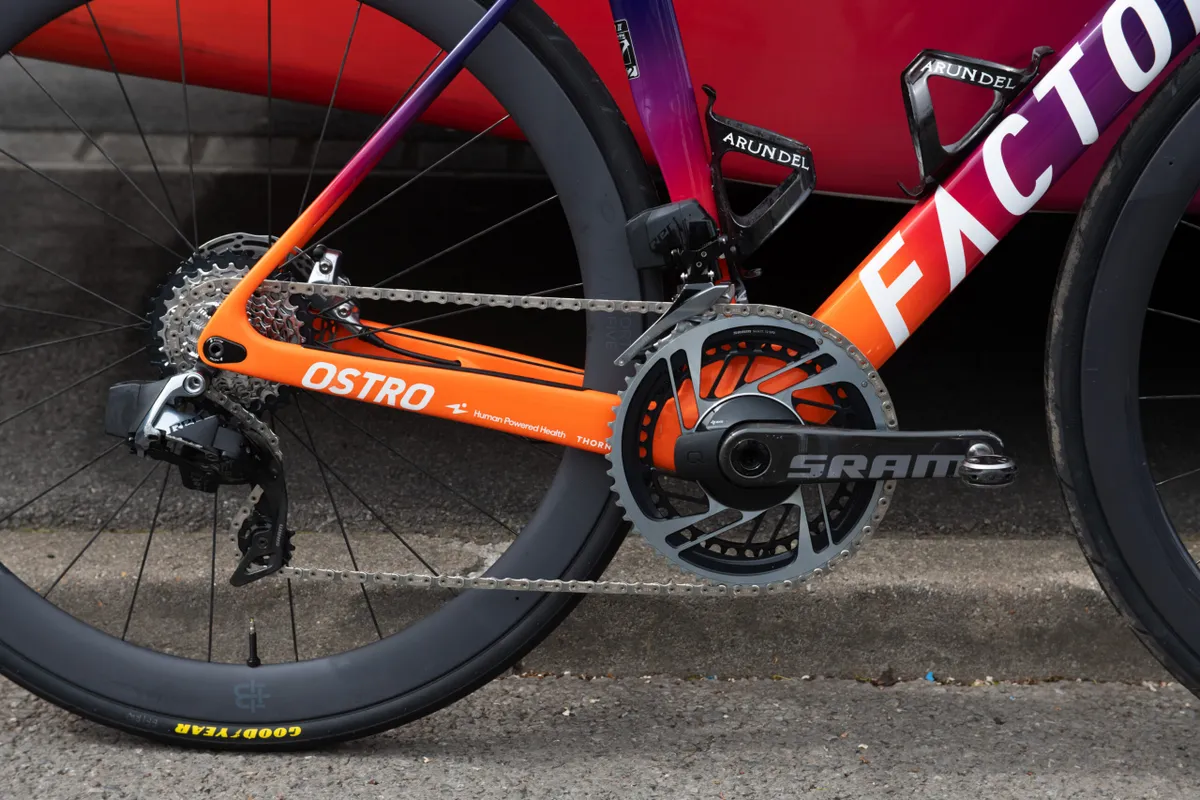
Lily Williams of the Human Powered Health team had a double SRAM setup with a 54T outer ring – a large chainring when you consider it was paired with a 10-33T SRAM Force cassette.
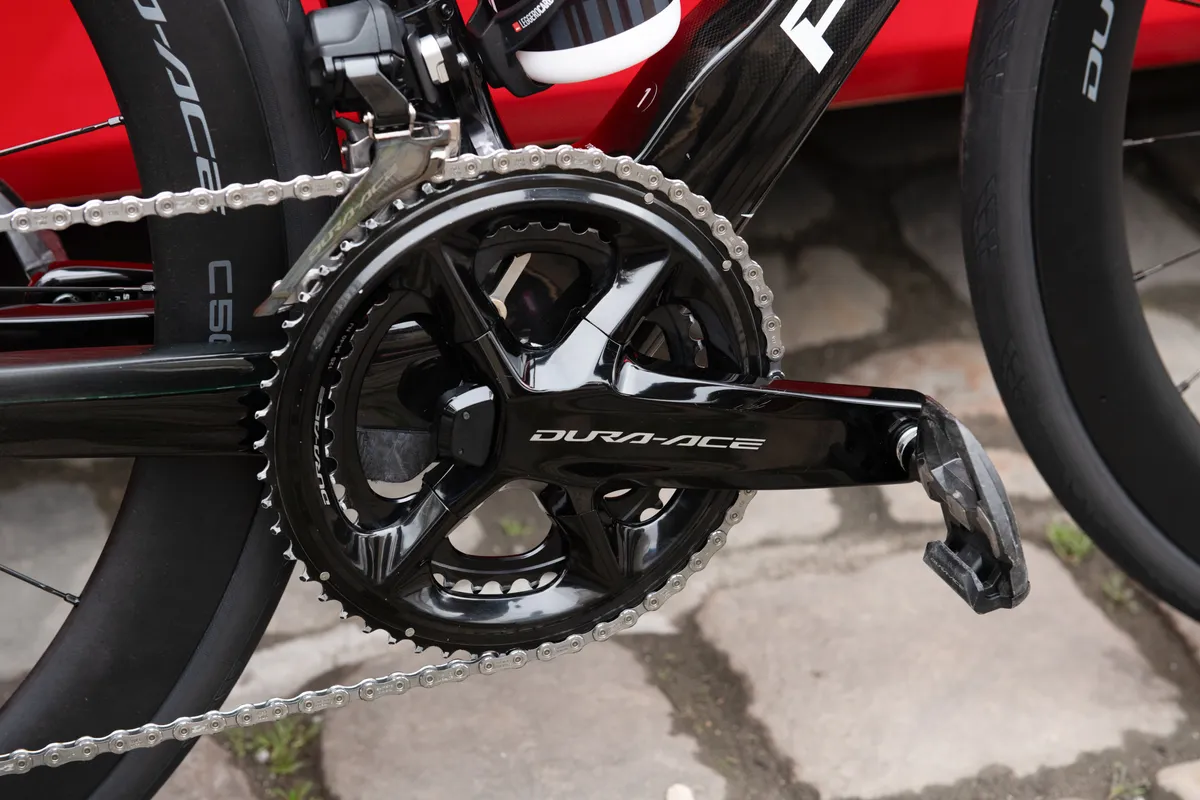
Unlike Tarling, most Shimano-sponsored riders used a 2x setup with a 54 or 56-tooth outer and a 46 or 48-tooth inner ring.
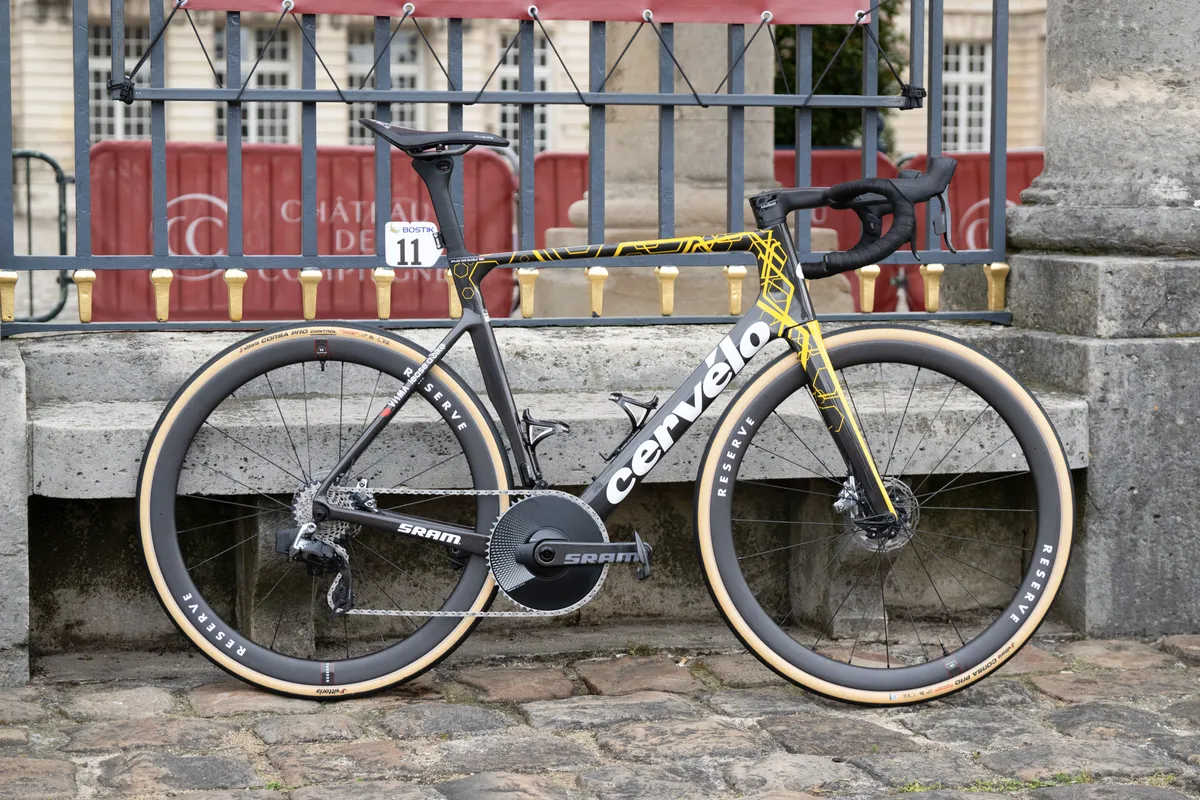
A number of SRAM riders were on 1x setups, generally using 54 or 52 tooth chainrings.
While Roubaix is billed as a flat race, it packs in a fair few lumps, climbing 1,414 meters over the 260km route.
So why do the riders want bigger gears for this race?
It comes down to the sheer speed and chaos of the race, which leads to riders chasing across gaps, attacking in crosswinds and generally riding faster than we can comprehend.
Aero dominates… again
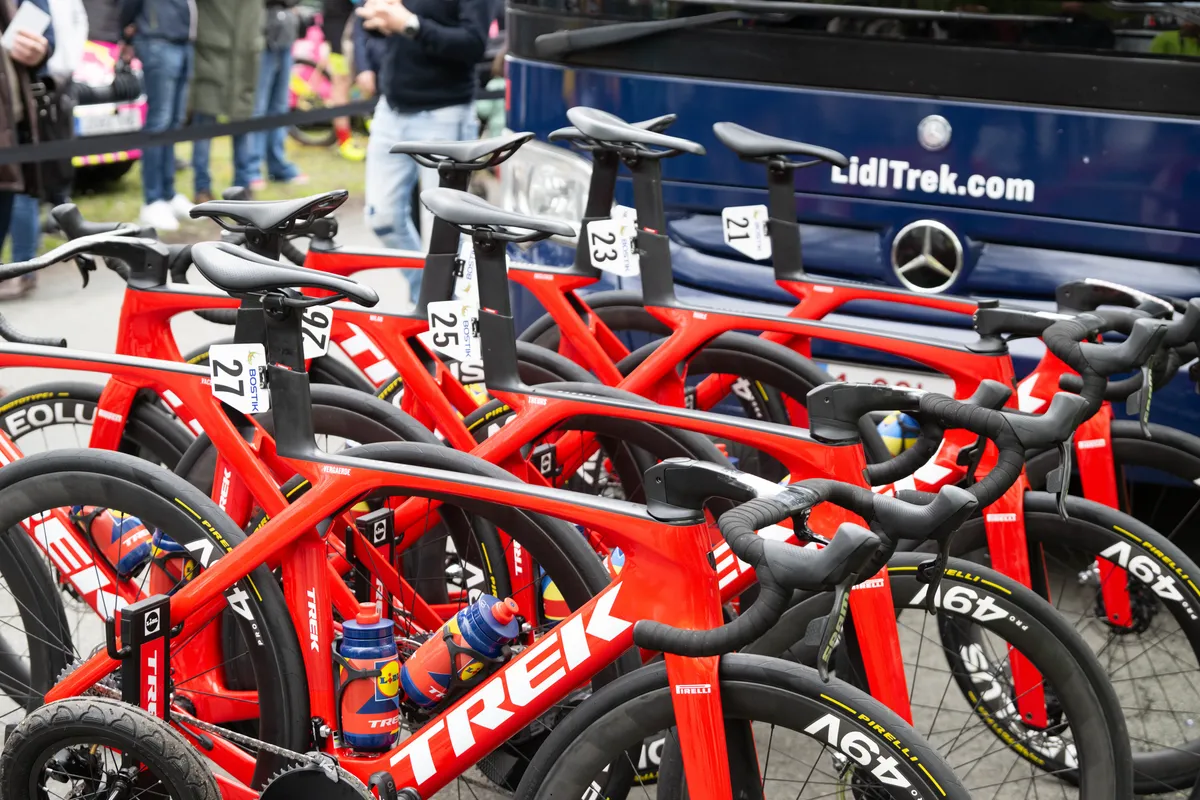
Given the brutal cobblestones, you might expect Paris-Roubaix to be a slower race.
However, the average speeds have been incredible in recent years, with 2024’s men’s race averaging just over 47km/h – building on last year’s blistering pace as the fastest edition ever.
As it has since Matt Hayman’s victory in 2016 aboard a Scott Foil, aero tech again played a major role in bike and clothing choices.
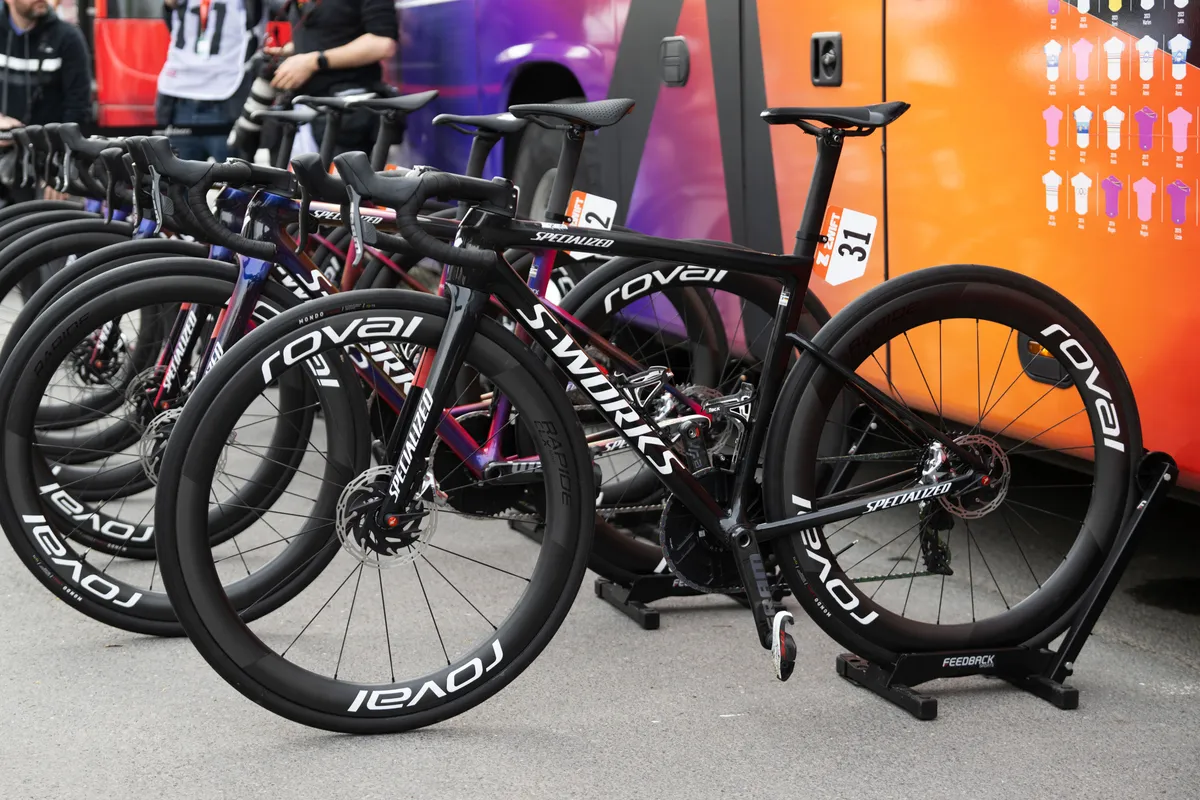
Despite making an endurance bike named after the race, all Specialized team riders rode the all-rounder Tarmac SL8.
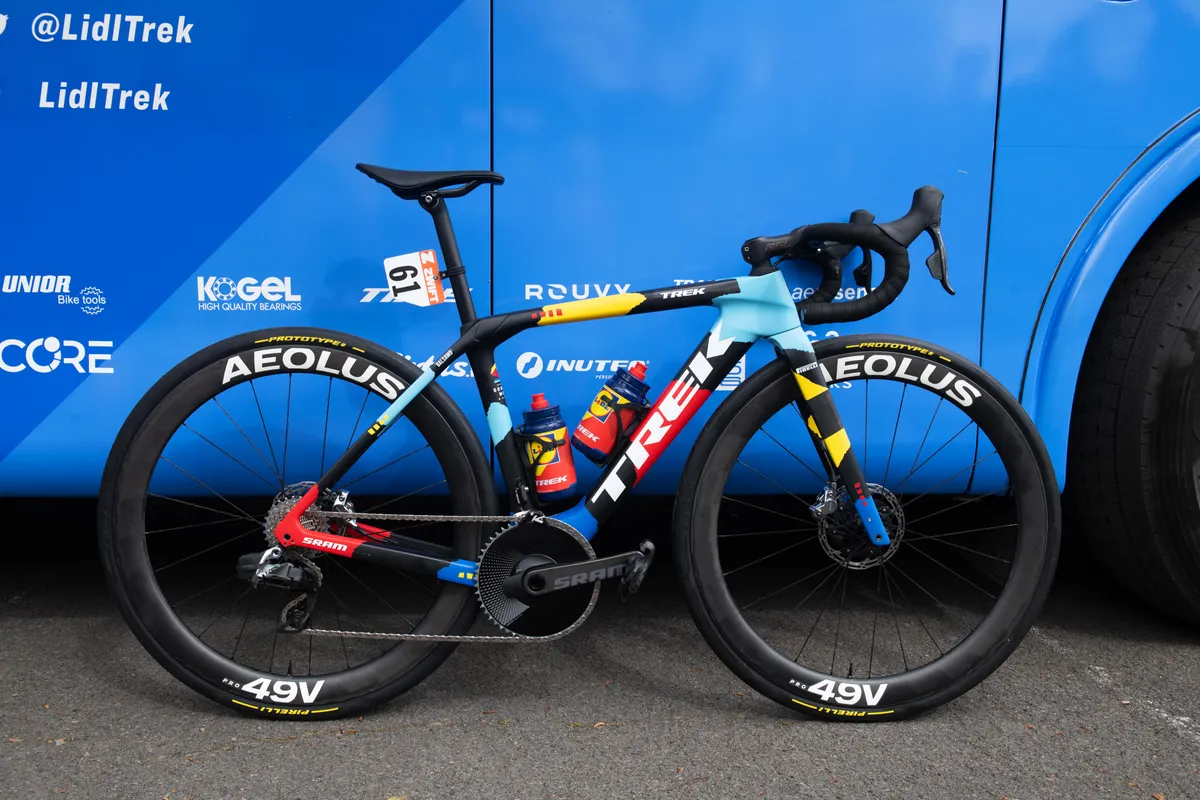
Endurance bikes weren’t entirely out of the picture, however. Elisa Balsamo rode a Trek Domane to second place.
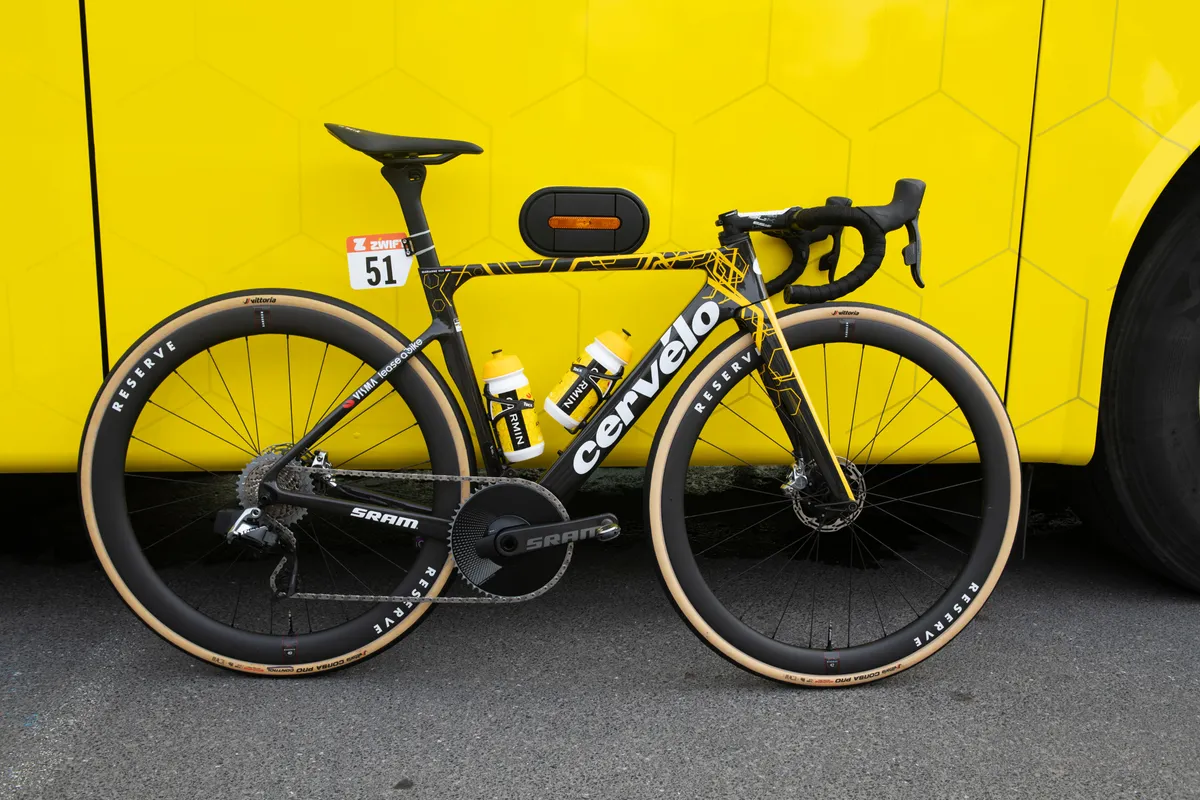
While not strictly an endurance bike, Marianne Vos, who placed fourth, rode a Cervélo Soloist.
But the men’s peloton was awash with aero frames. The podium featured two Canyon Aeroads and Mads Pedersen’s Trek Madone.
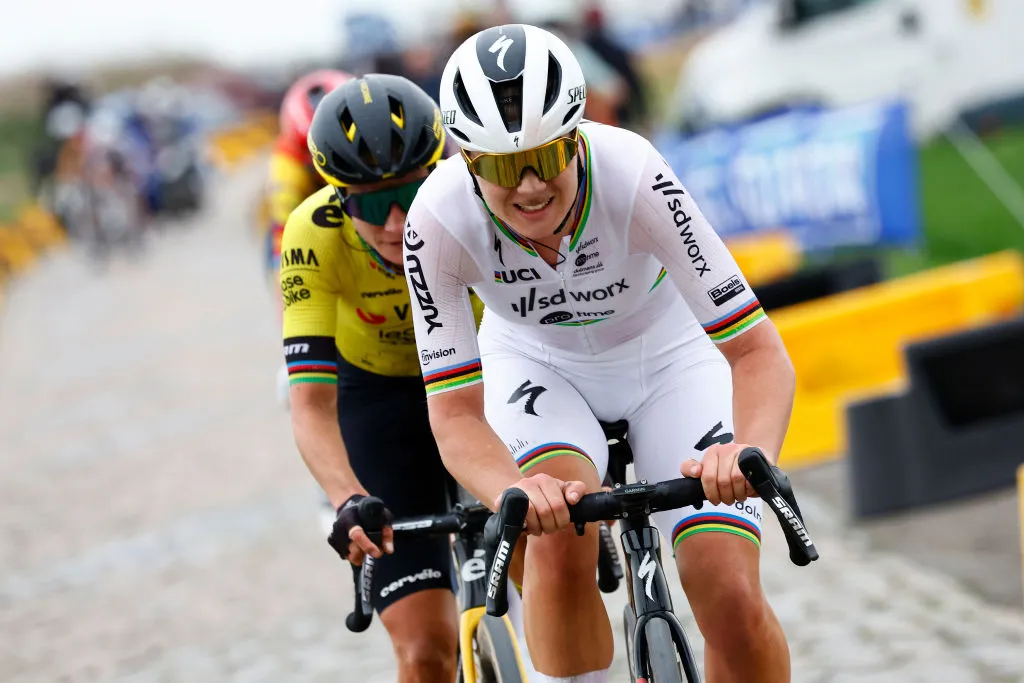
Outside of bikes, aero tech continues to creep into other areas of both races.
Lotte Kopecky went all-in with a full white world champs skinsuit, and nearly everyone wore aero socks.
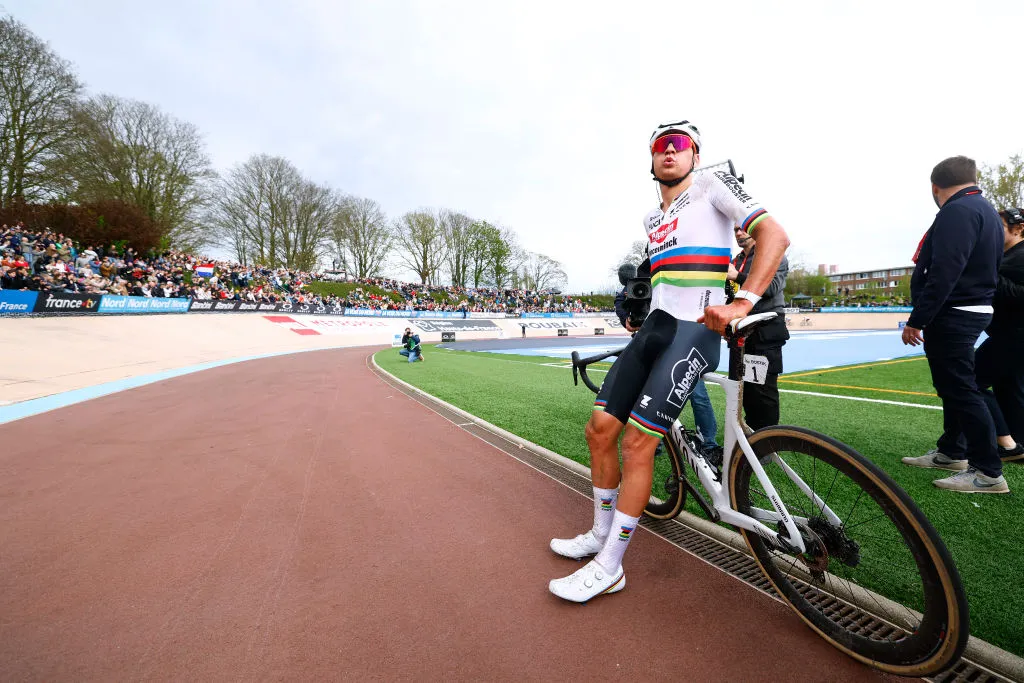
However, the winner of the sock game was van der Poel, who wore matching custom world champ socks – you know you’ve made it when you get a pair of those.
Mathieu van der Poel’s winning Canyon Aeroad
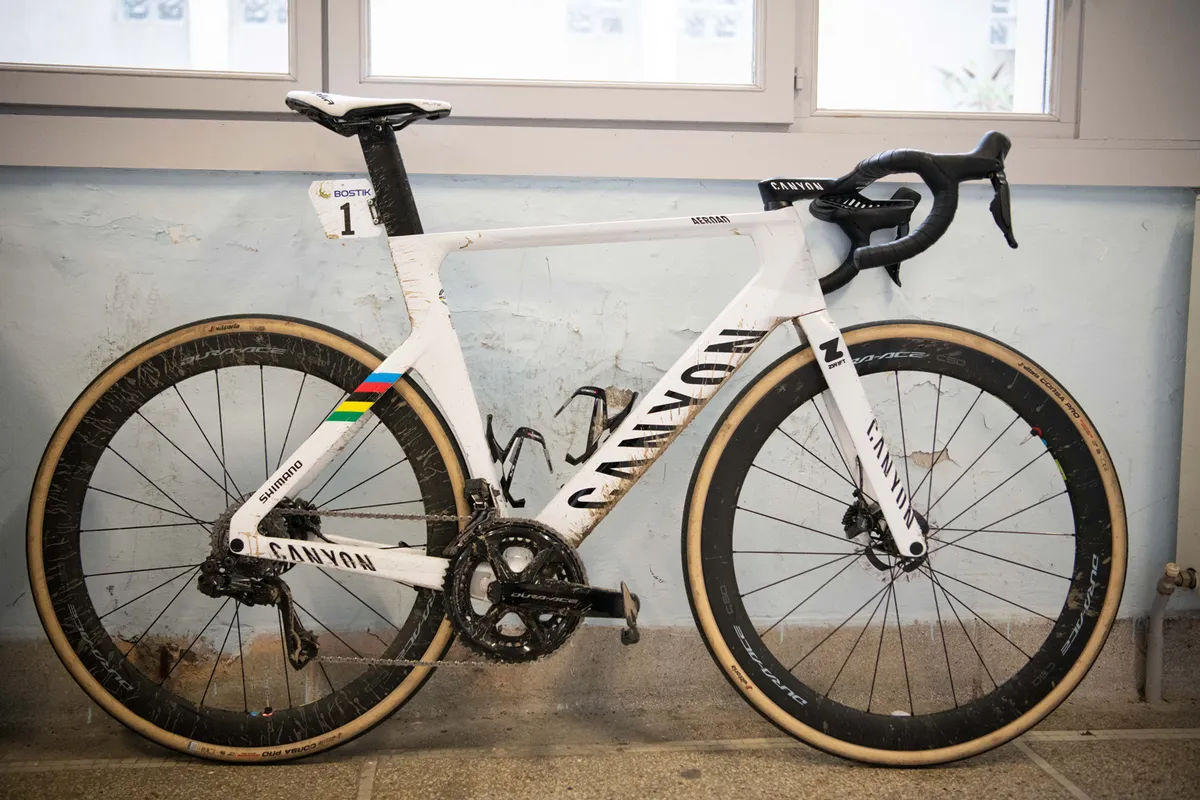
If you want to take a closer look at van der Poel’s winning Aeroad – a bike that best exemplifies the totemic shift to aero tech at Roubaix – check out our full gallery.
Comfort wins out for some
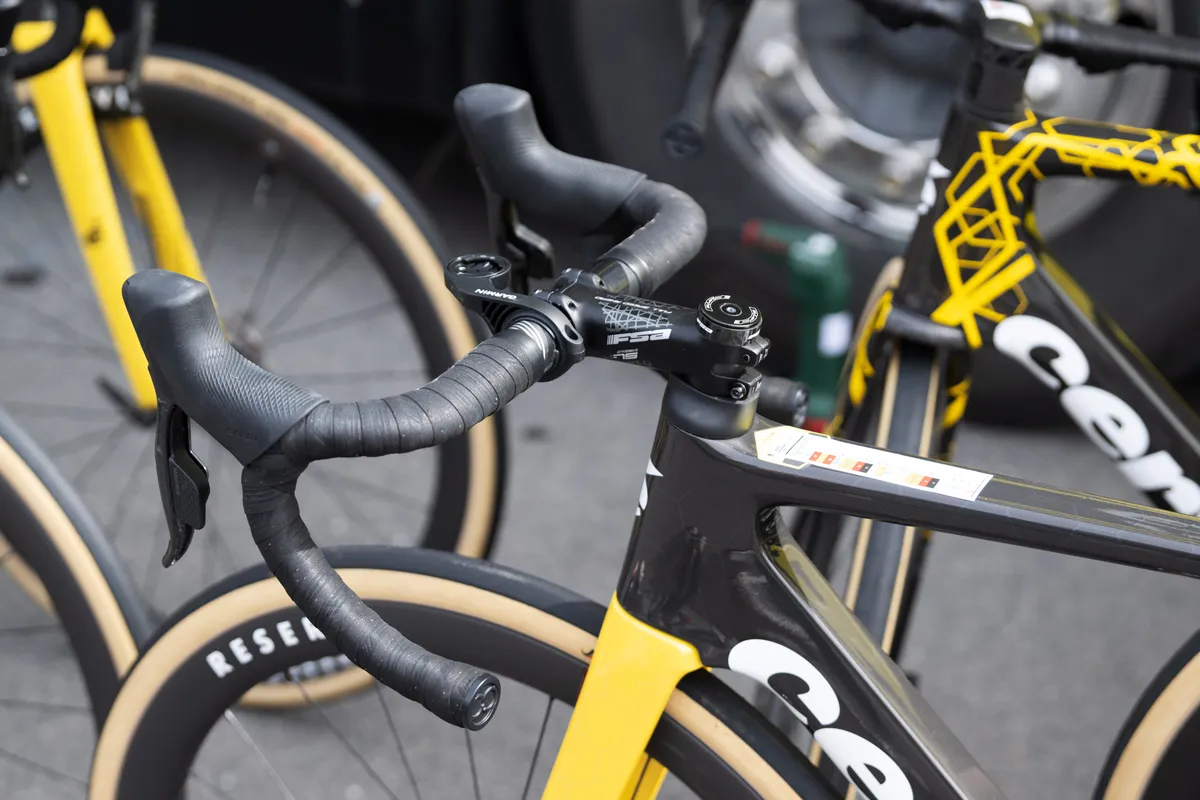
Riders will only go so far in the name of aero gains though.
Handlebars play a key role in comfort, and many riders switch from their standard one-piece aero cockpits to take advantage of a round bar.
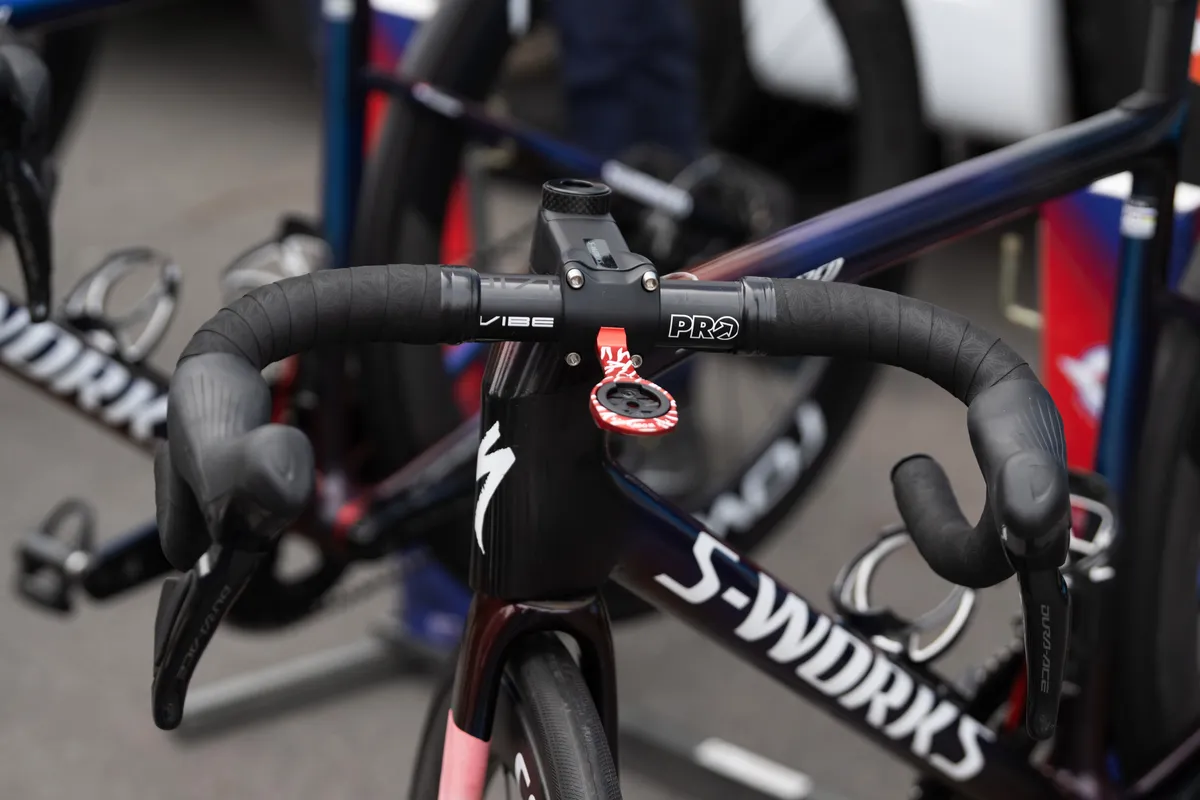
While they may not be as aero, these can be comfier over the cobbles, or offer a rider a more secure hold of the bar than a flattened top section.
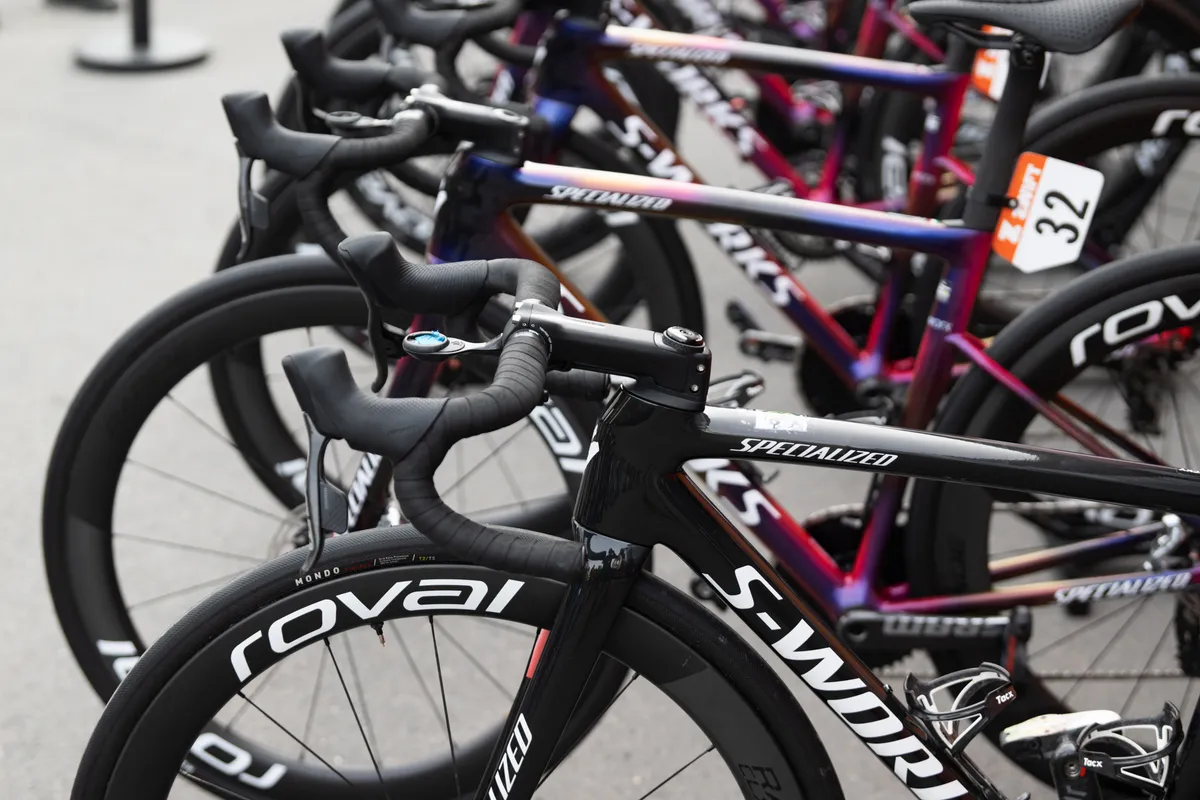
Roval Rapide one-piece cockpits were dropped by SD Worx and Soudal QuickStep in favour of two-piece cockpits from Pro and Specialized.
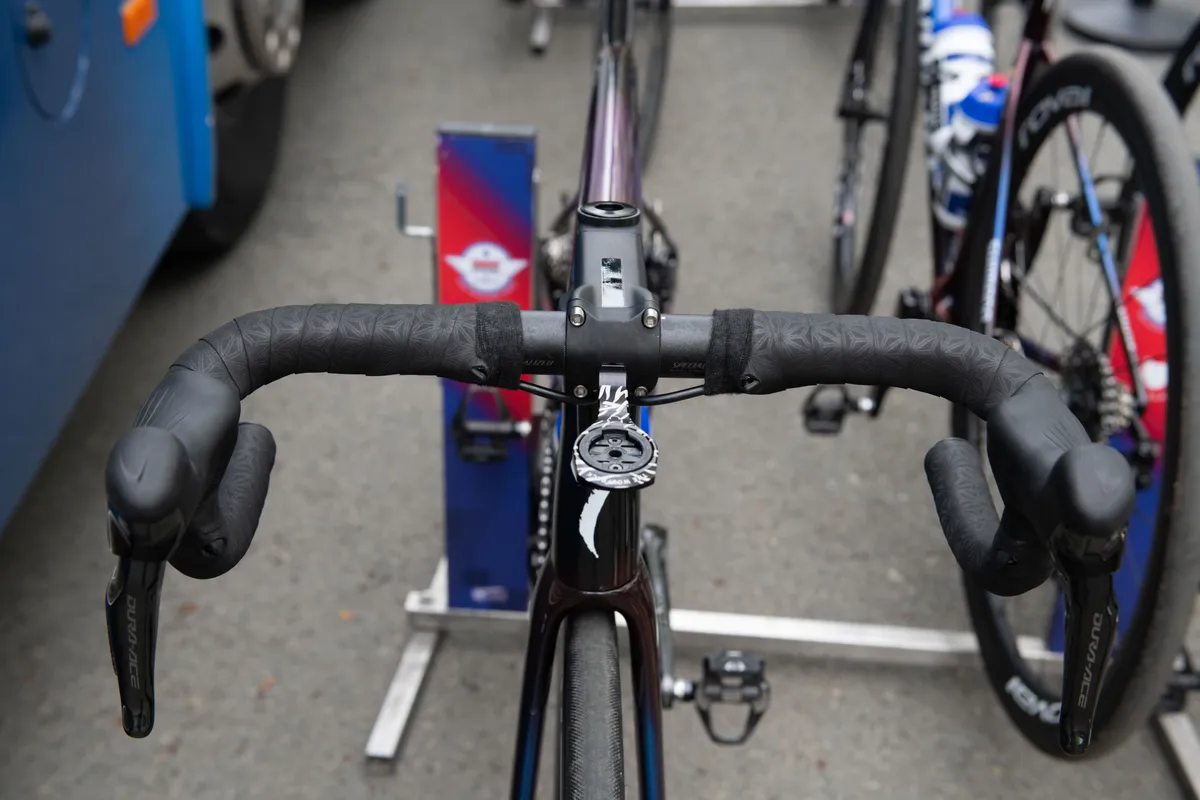
Kasper Asgreen even shunned carbon, using a shallow drop aluminium bar from 2014.
Teams dabble with gravel tech
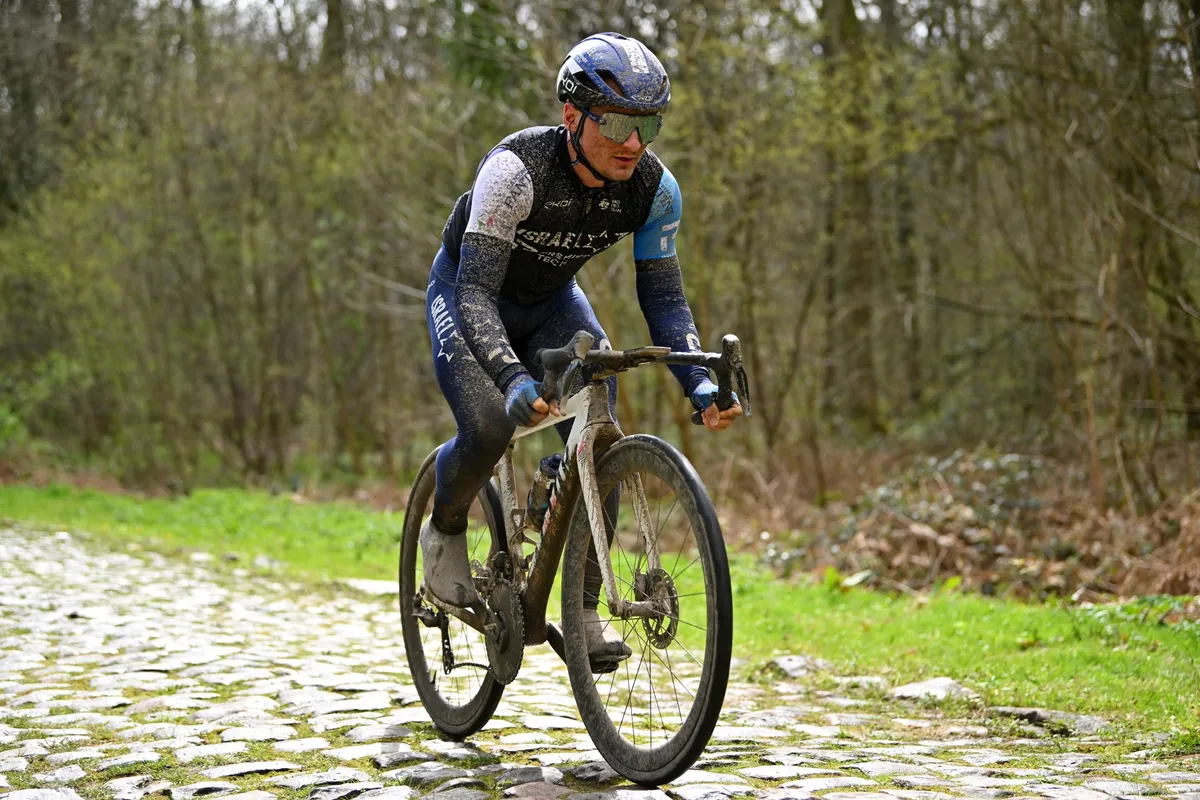
Few aero bikes offer tyre clearance big enough to accommodate chunky 30 or 32mm tyres. Even if riders push their luck exceeding official clearances, add in mud and you’ve got a recipe for disaster.
Israel Premier Tech left their Factor Ostro VAM road bikes at home in favour of the Factor Ostro Gravel.
That increases tyre clearance from 32mm to 45mm – no problems with mud then, but that wasn’t the only reason for the switch.
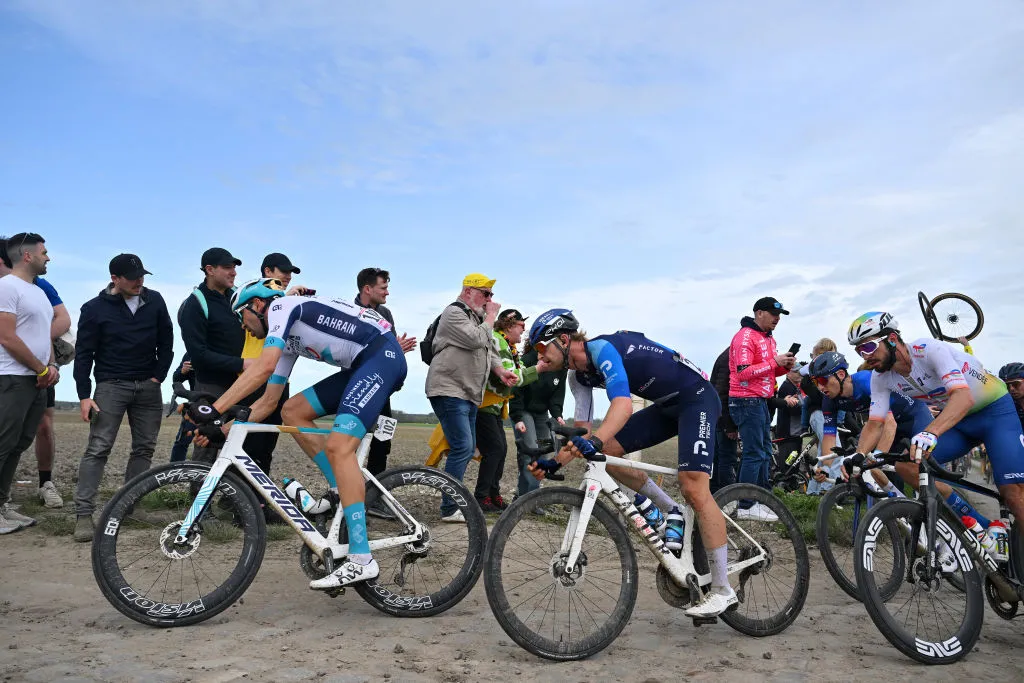
Gary Blem, the team’s equipment manager, said riders overwhelmingly felt the Ostro Gravel was the best choice for Roubaix following testing on the cobbles after Opening Weekend.
The gravel bike’s longer wheelbase provides calmer handling, providing riders more time to react. Factor says the bike doesn’t compromise too much on aerodynamics versus the VAM. Riders said they’d prioritise comfort in either case.
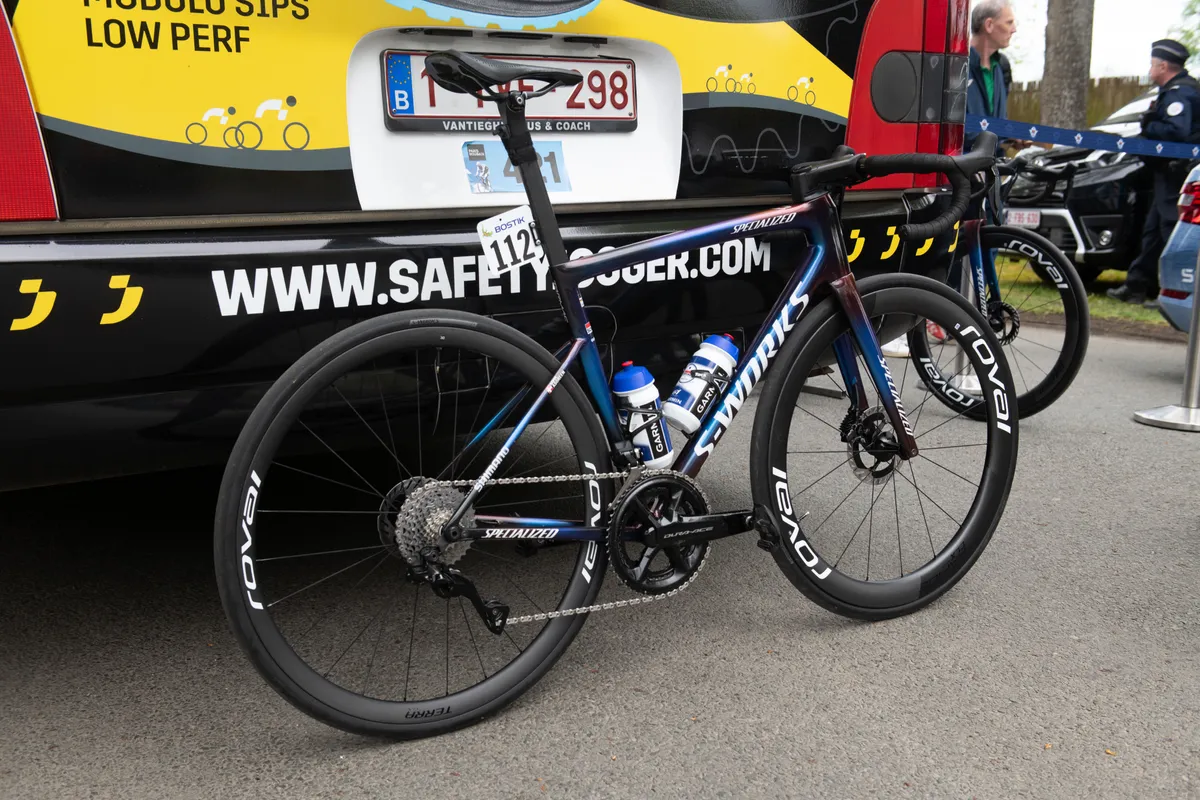
Bikes weren’t the only gravelly thing we saw. Kasper Asgreen was rocking a Roval Terra CLX rear wheel. Quite why we’re not 100 per cent sure, but we guess the wider internal width of this gravel wheel helped optimise the profile of his Specialized Mondo tyres.
Modified cyclocross bikes were long used in Paris-Roubaix and, while this isn’t quite a return to canti brakes, green tubulars and box section rims, it was a real treat to see riders go against the norm.
Gravel tyres for Roubaix
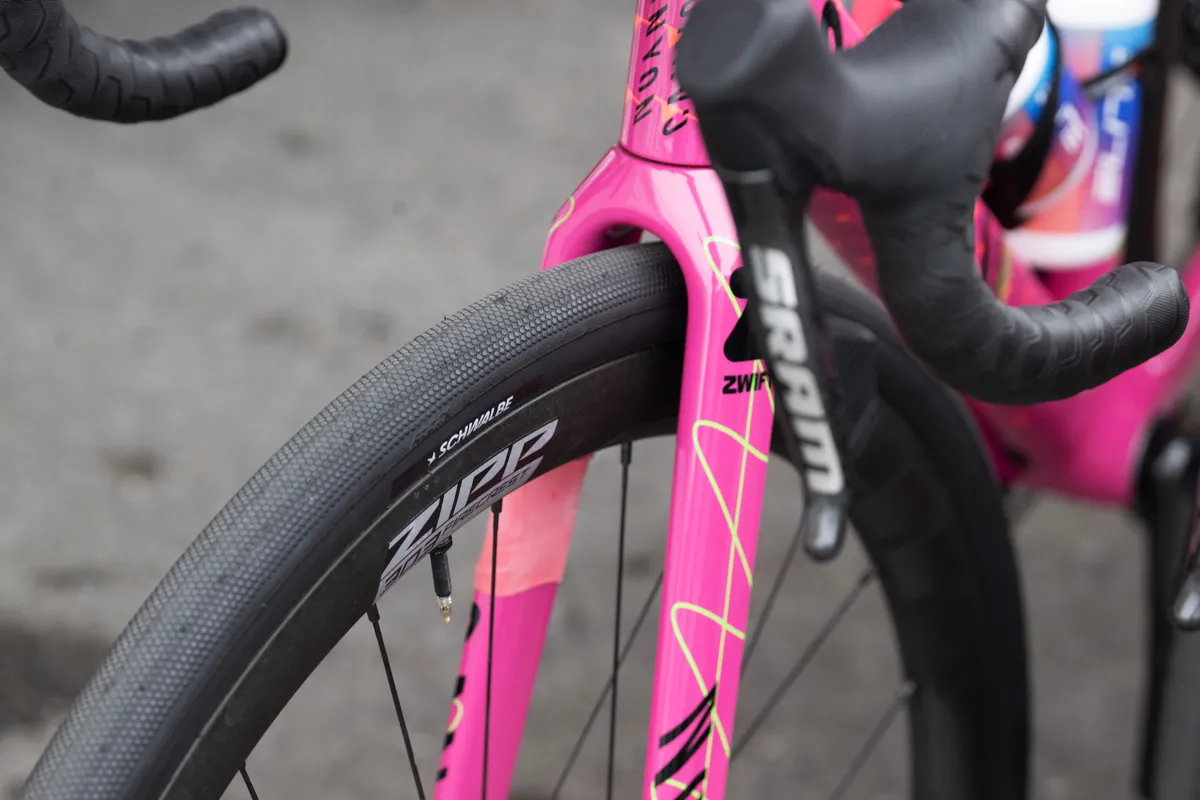
Gravel tech dabbling extended elsewhere, with Elise Chabbey and Alice Towers, riding Schwalbe G-One Speed gravel bike tyres.
The near-slick gravel tyre has a light dotty tread and a tough casing.
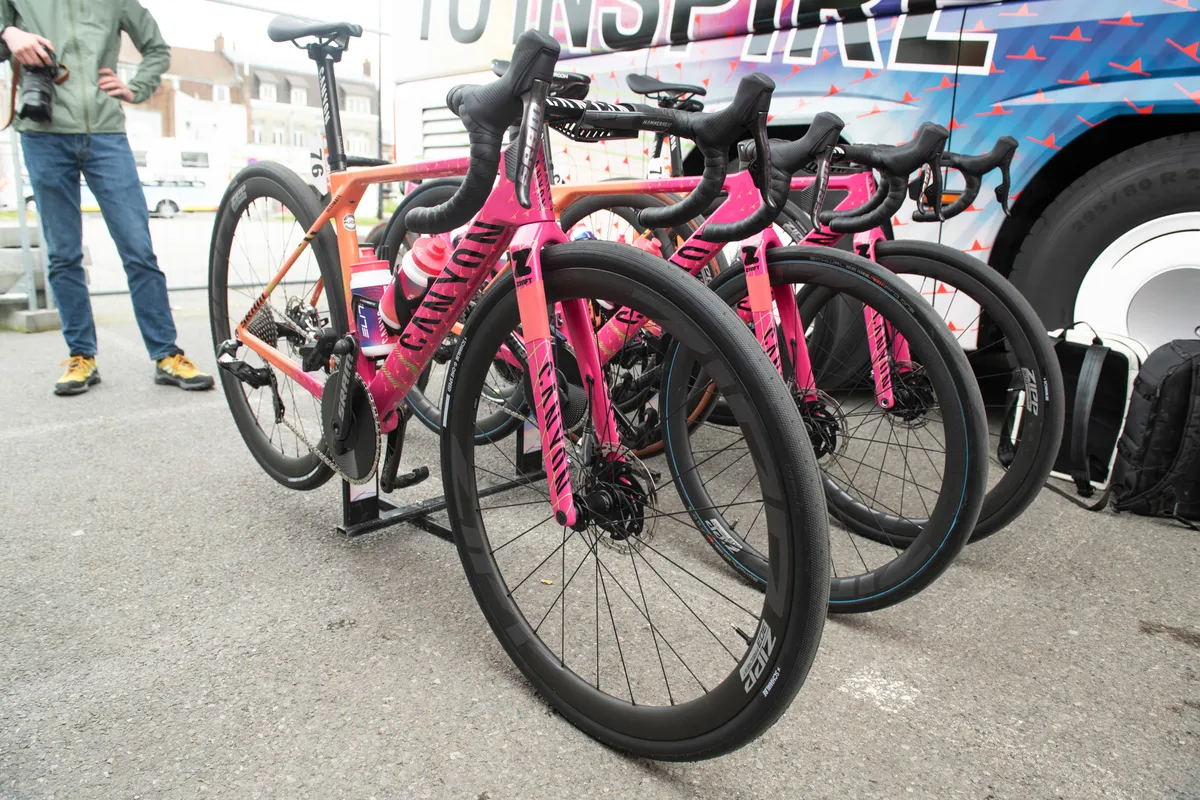
The Canyon//SRAM riders’ choice is an outwardly unusual one given – according to independent tests, Schwalbe produces faster gravel tyres – such as the G-One RS Super Race – in similar sizes.
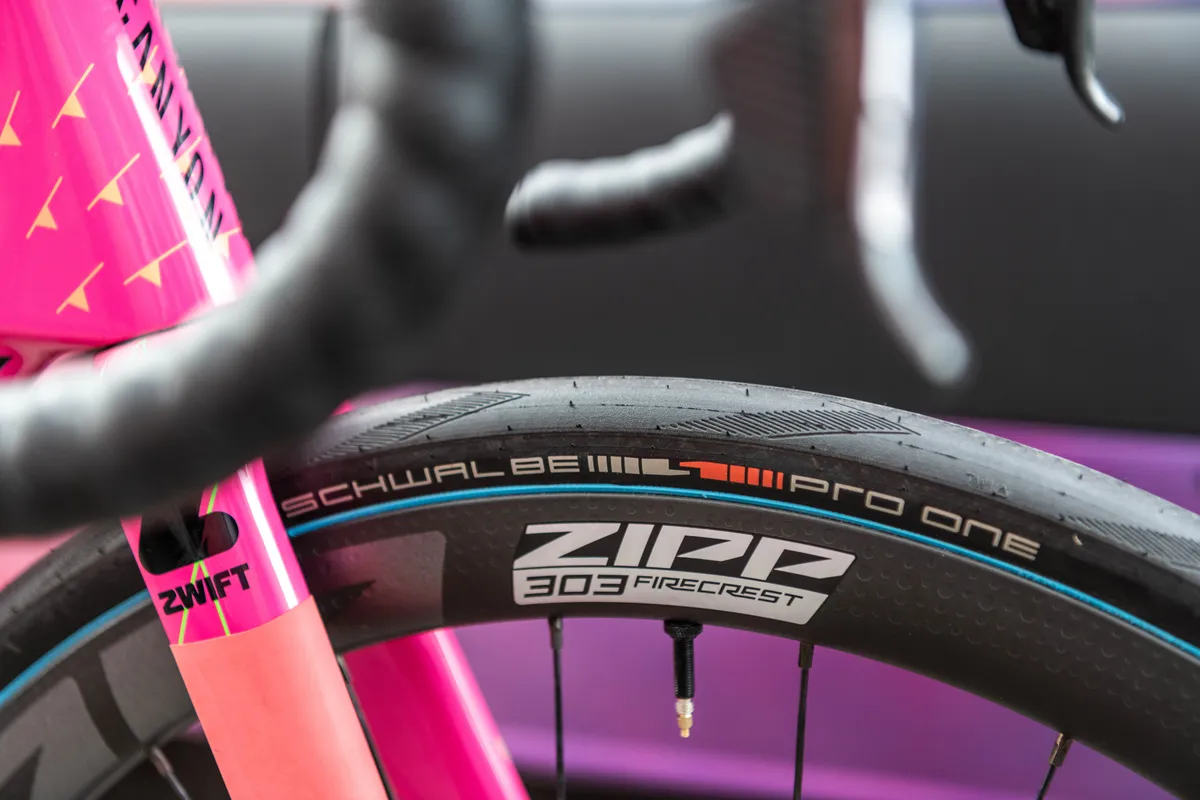
Furthermore, its range includes faster still road tyres in even wider sizes. Their teammates, Tiffany Cromwell and Soraya Paladin, opted for 34mm Schwalbe Pro One tyres, for example.
Perhaps the riders were seeking increased grip or puncture resistance despite the increase in rolling resistance.
Cobble-friendly shifting
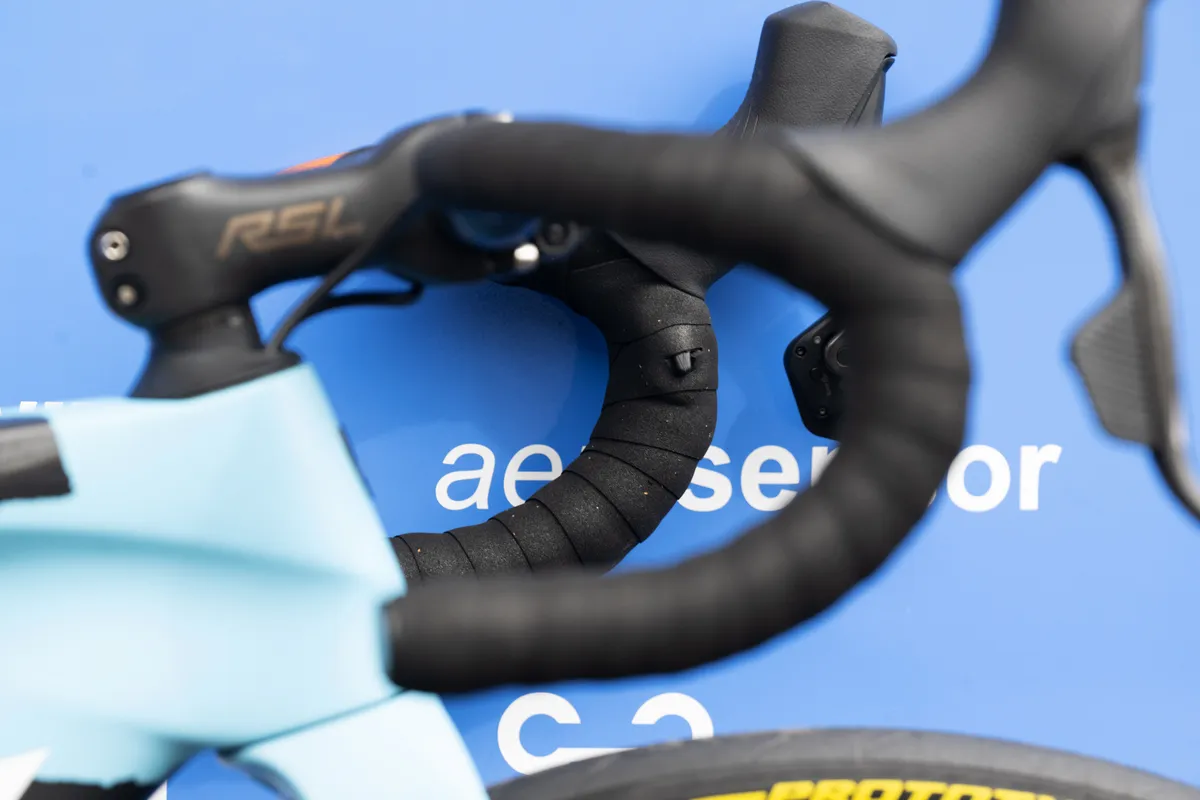
Sprint shifters (known as Blips in SRAM parlance) are common on pro bikes but no more so than at Roubaix.
Some riders prefer to ride on the tops for cobbled secteurs, with many speccing extra shifters on the front or underside of their bars.
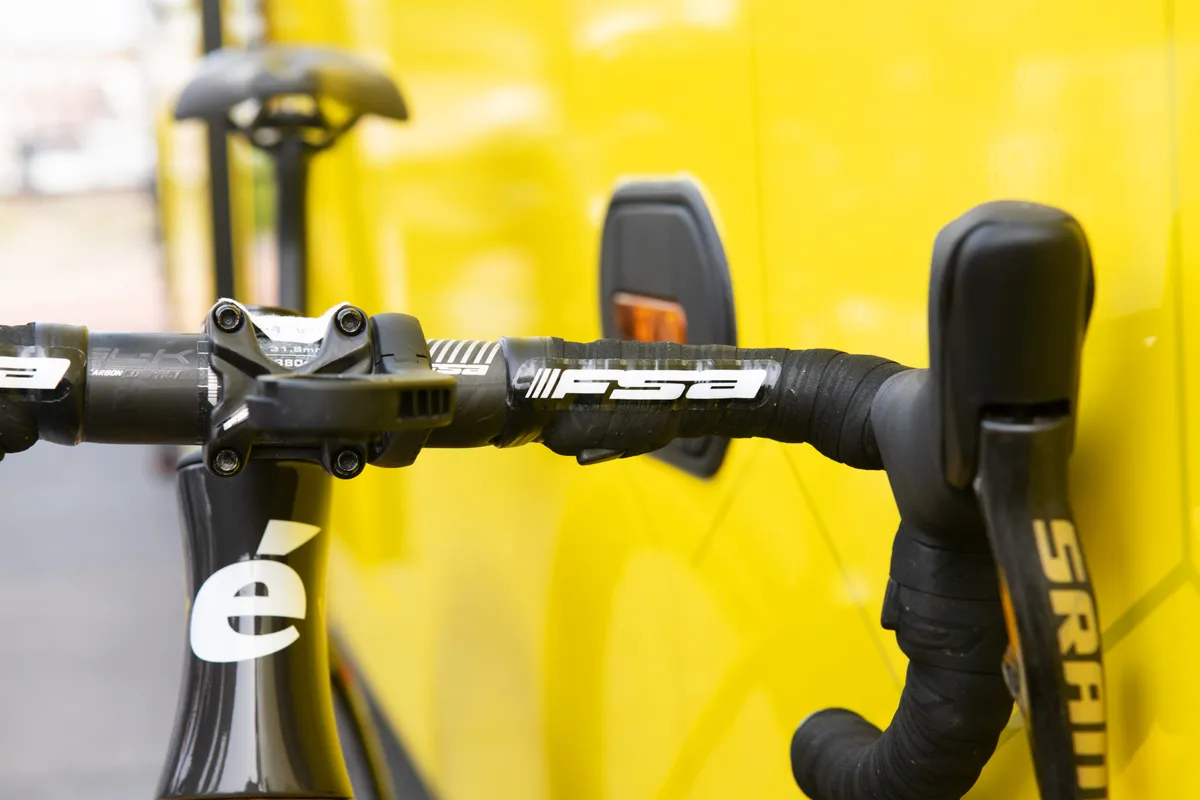
Sprint shifters mounted in the drops are also common, with some riders going as far as adding both to their bikes.
Comfort aside, adding additional shifting points is probably wise – moving hand position while clattering along at close to 50km/h amidst the chaotic clamour of the cobbles while trying to relieve your death grip is probably… hard.
Cobble-specific bar tape
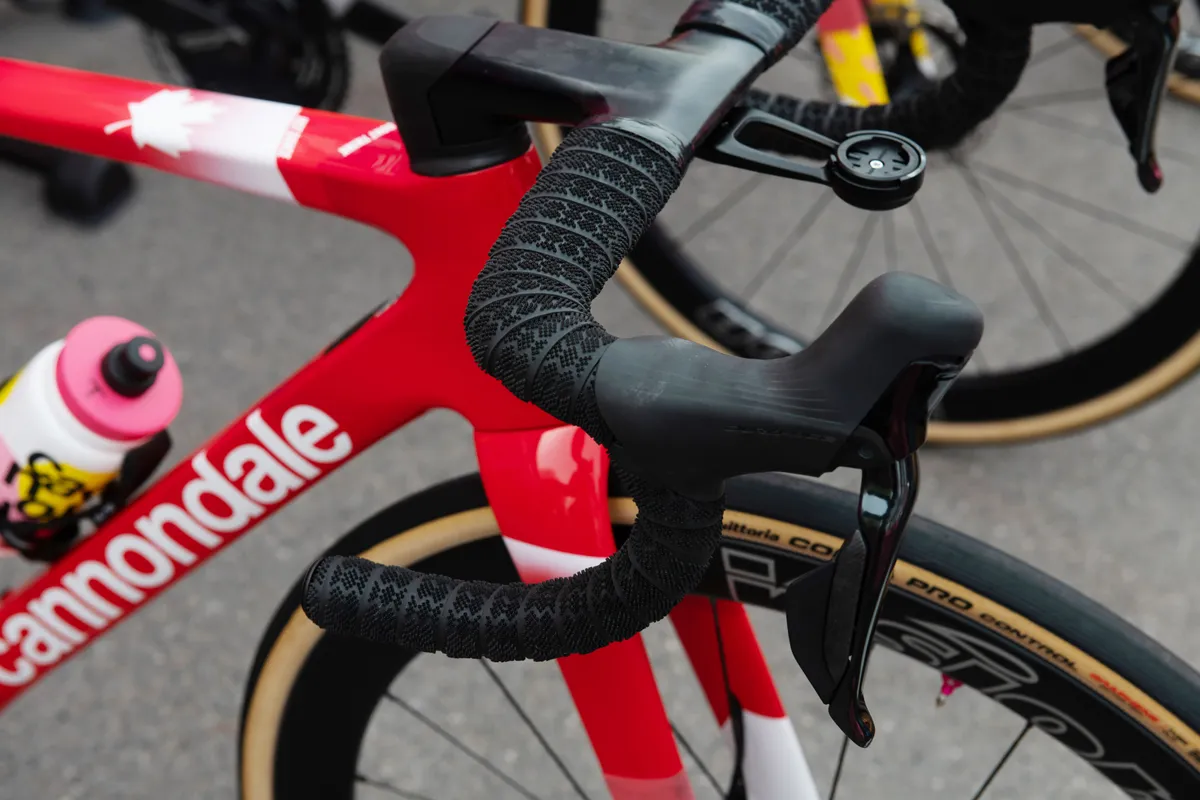
It’s common to see double-wrapped bars at Paris-Roubaix, but last year’s winner Alison Jackson used something altogether different.
Her cockpit was wrapped with Prologo’s Onetouch 3D handlebar tape, which launched just before the women’s race started.

This 3.5mm thick tape features raised textured portions that Prologo claims to improve comfort and control in rough terrain. Dubbed CPC technology, similar textured portions feature on some of Prologo’s saddles.
Old tech, new race
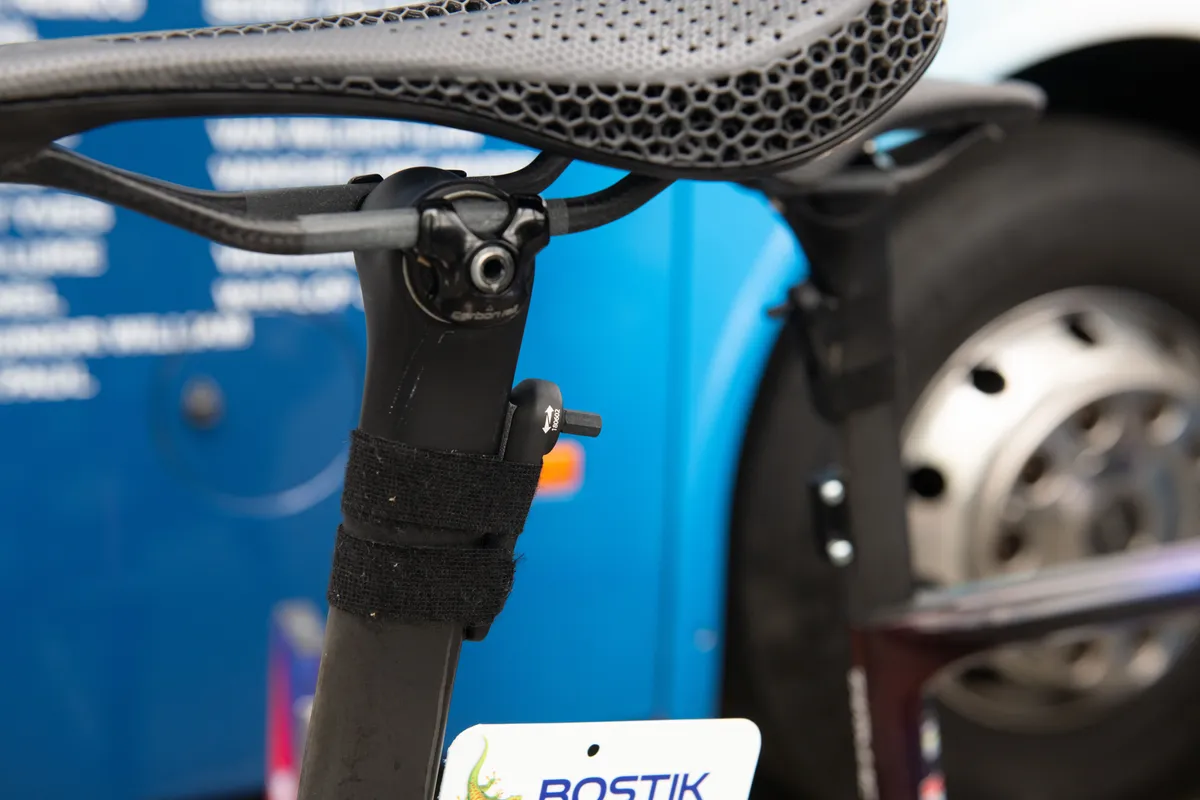
Aero frames and fancy tech may get the limelight, but little old-school hacks define Roubaix.
The race places immense demands on literally anything that has the potential to rattle loose.
Lotte Kopekey even had to tighten her bars on the move after they slipped on an early cobbled sector.
Many bikes feature hex keys taped to the back of their seatpost for this very reason – team cars can easily be several minutes back on the narrow lanes of Roubaix, so time is of the essence if a seatpost begins to slip.
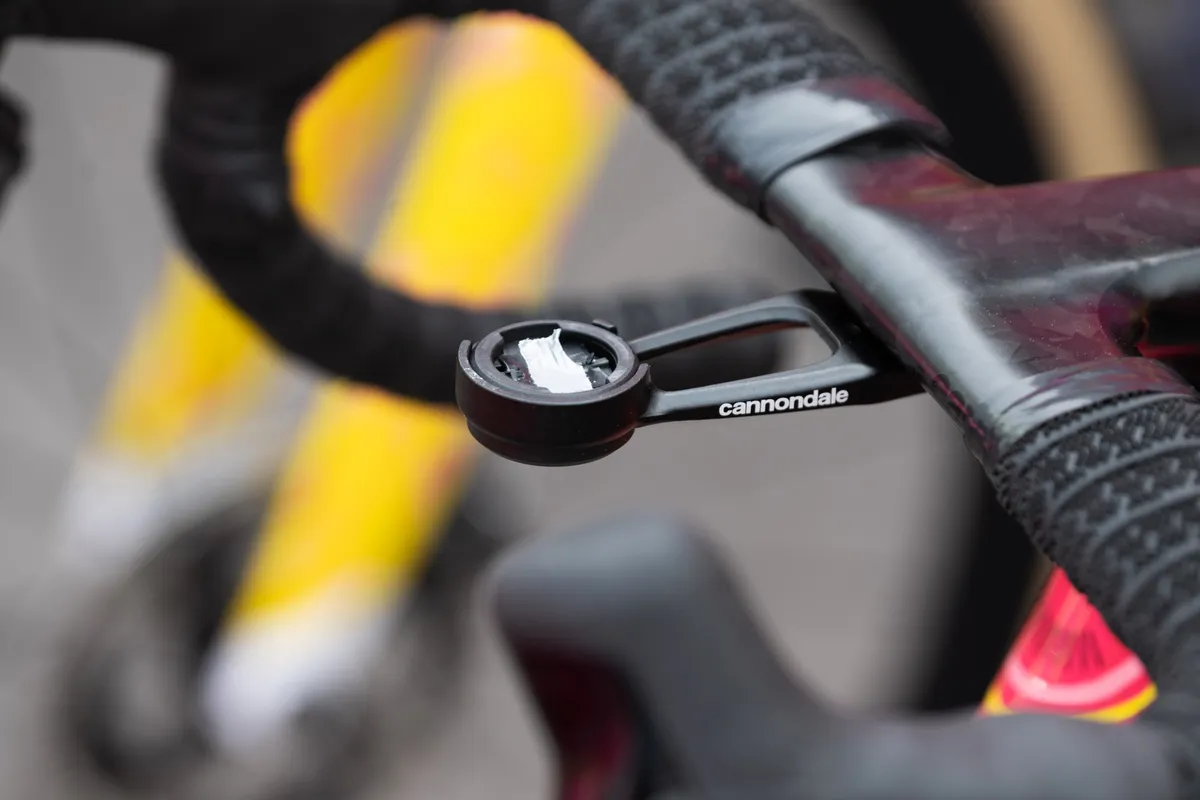
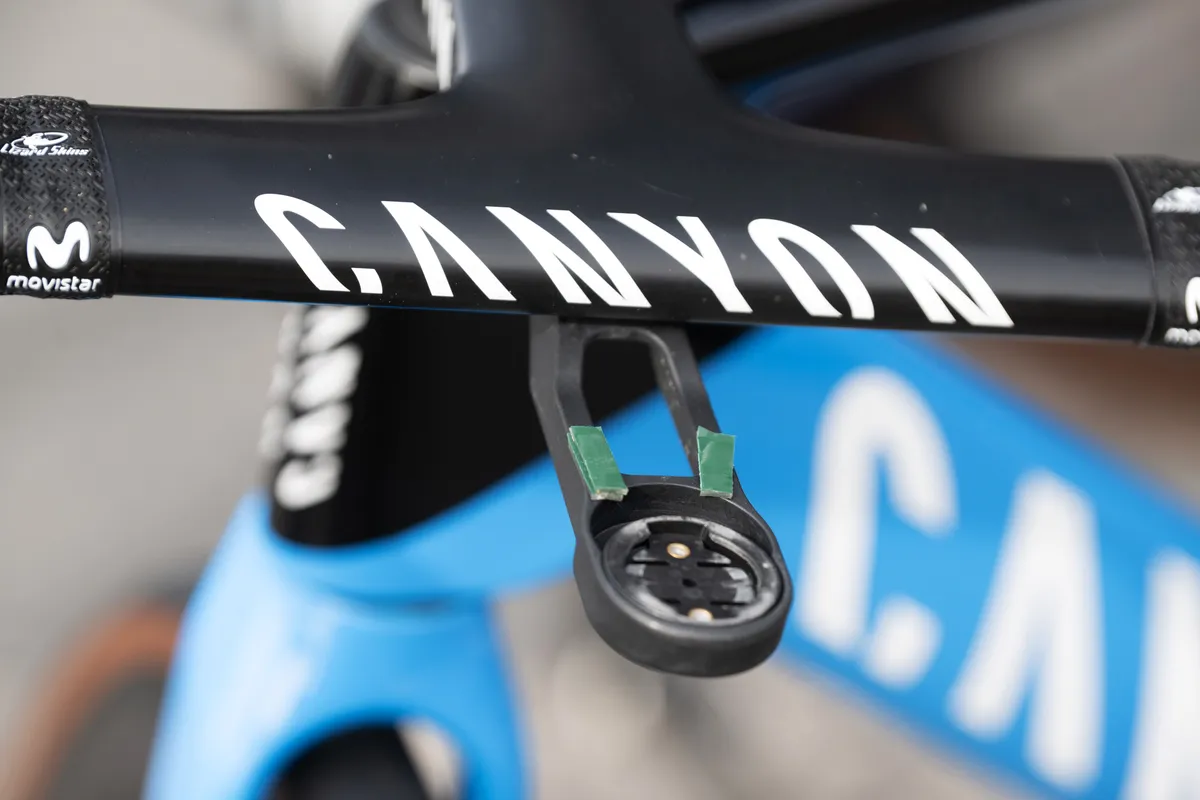
Bike computers are another key concern. This Cofidis rider used fluffy tape to secure their Wahoo computers. EF rider kept it simple with what looks like carpet tape.
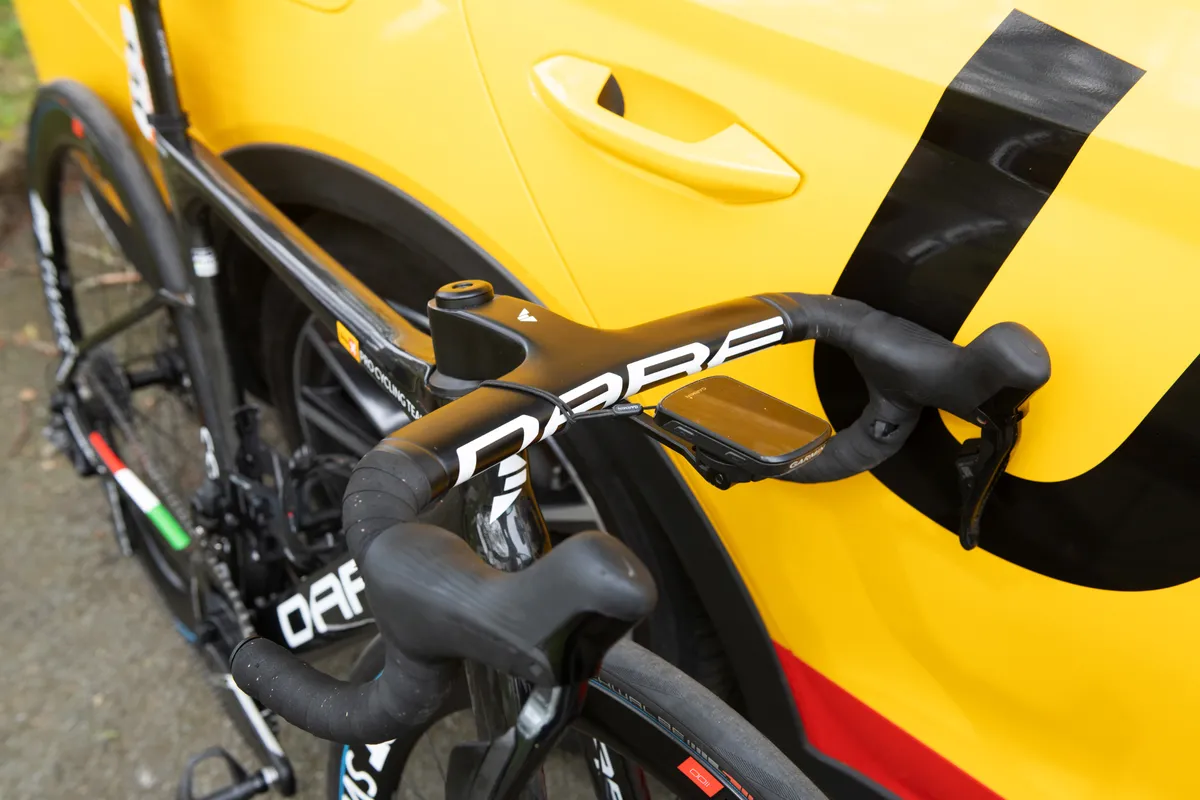
If all else fails, a little dongle will at least keep a computer dangling from the bars.
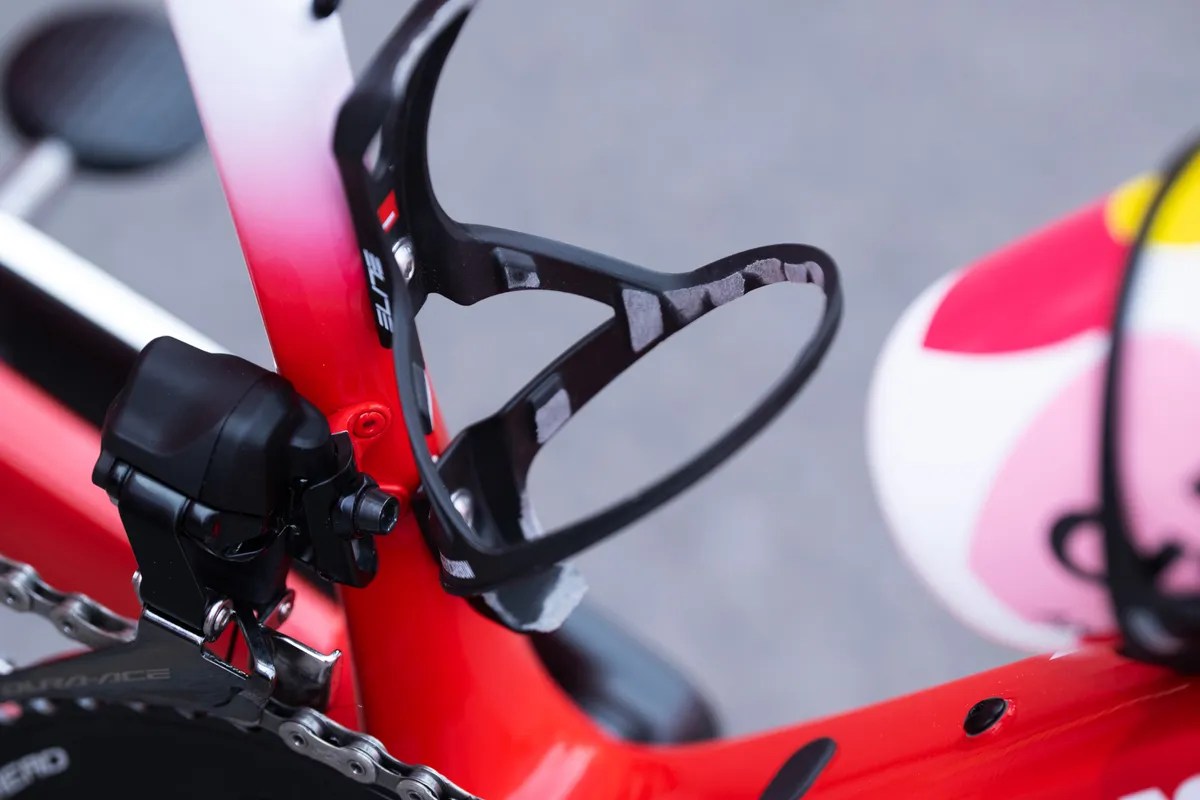
The Decathlon AG2R team was one of many using grip tape on the inside of their bottle cages.
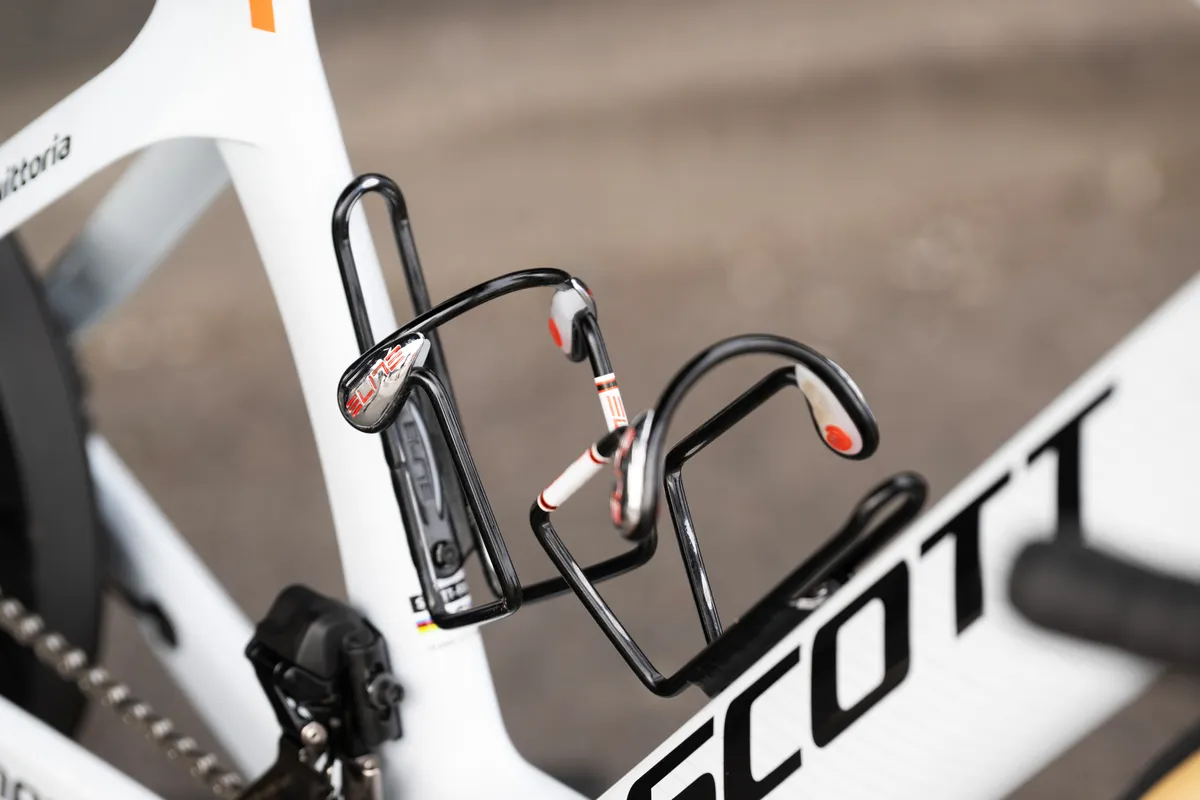
Pfifer Georgie’s lovely Scott Foil was finished with a good old pair of metal Elite bottle cages that can be bent in to hold the bottles securely.
But it didn’t work for everyone. Bottles were stiff flying everywhere and Sam Welsford took to Twitter to ask for his Hammerhead back. If you see it, let him know.
